Trekking in the Himalaya Mountains, Nepal
There were many reasons that we were so excited to visit Nepal on this trip. This would be Susan’s first time in Asia, we would be trekking in the world’s tallest mountain range, and we would get to experience the culture and cuisine of a place that is totally new to us. But most importantly Matt’s Parents were joining us for a month in Nepal! During our stay we spent time in the large cities of Kathmandu and Pokhara, did a week long hiking trek on the Annapurna Base Camp Trail, explored the birthplace of Buddha in Lumbini, and saw some incredible wildlife at Chitwan National Park. This post will focus on the stunning Annapurna Base Camp Trek we did through the Himalayas. We weren’t prepared for the storied history, incredible mountain views, and the many, many, many steps contained in the Himalayas.
Our first two weeks in Nepal were devoted to trekking in the Himalayas, specifically the Annapurna Base Camp Trek. To “trek” in the Himalayas means to hike along ancient (and some modern) trails between villages each day, usually on the way to a mountain peak’s base camp. Our journey actually began in Kathmandu where we all arrived in Nepal. There we met our guide, Dinesh, who owns Zam Zam Trekking. We had some last minute supplies to get; sleeping bags, hiking poles, and some more outer layers. Dinesh took us to a local “gear den” supply store. This place was on the 2nd floor of a building in the city with two large rooms, a hallway, and a stairwell, all of which were swamped in outdoor gear. There were piles of jackets, clothes, bags, and other gear that were 4 ft tall and covered nearly every inch of the rooms. The workers were standing on the piles of gear trying to help the customers find whatever they were looking for. The chaos was well worth it though because we got everything we needed for the four of us for less than the cost of one nice sleeping bag back home. Most of the items are definitely knockoffs that may not have the REI warranty on them, but they will definitely serve us well for the 10 days that we need them.

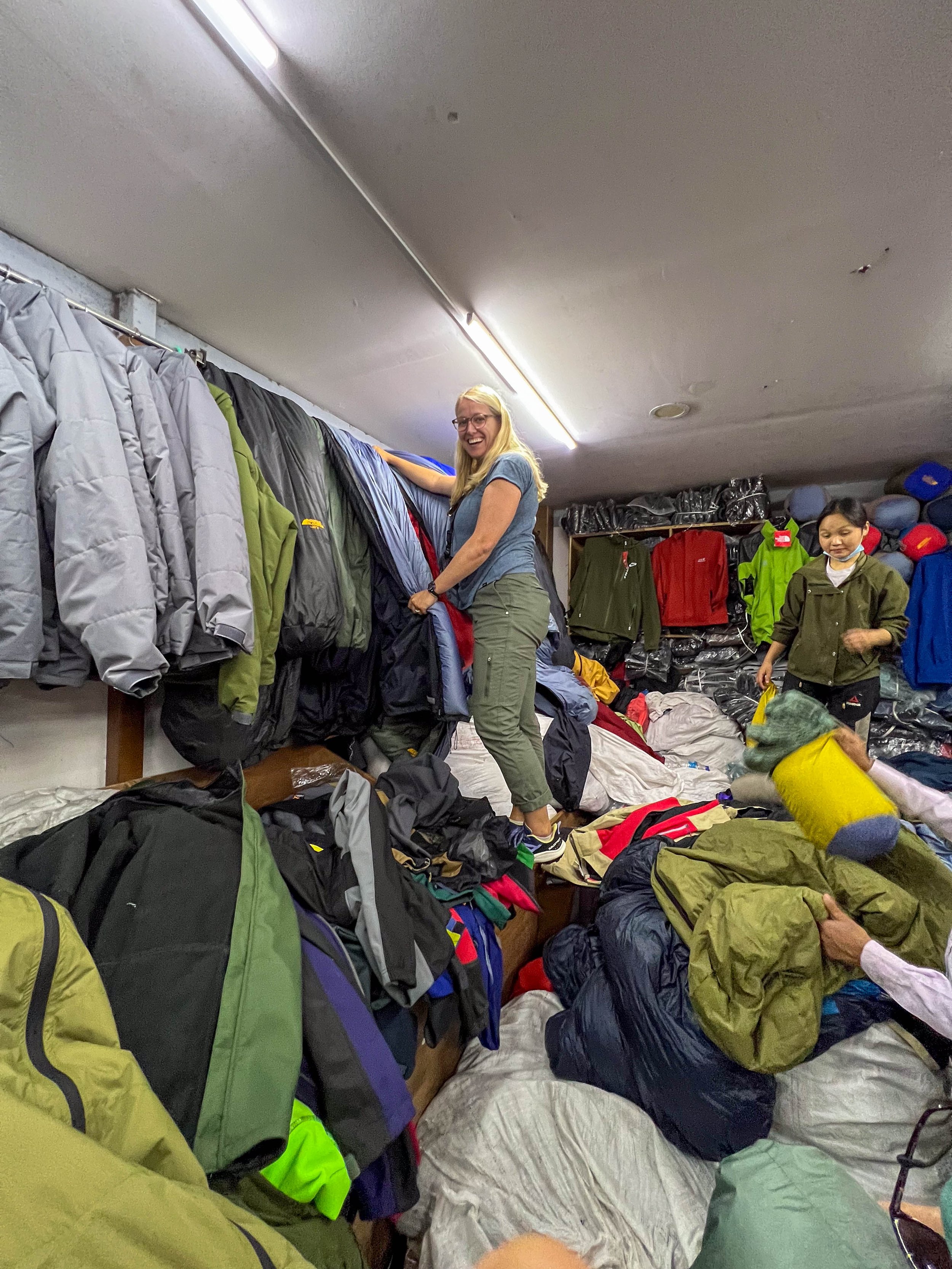

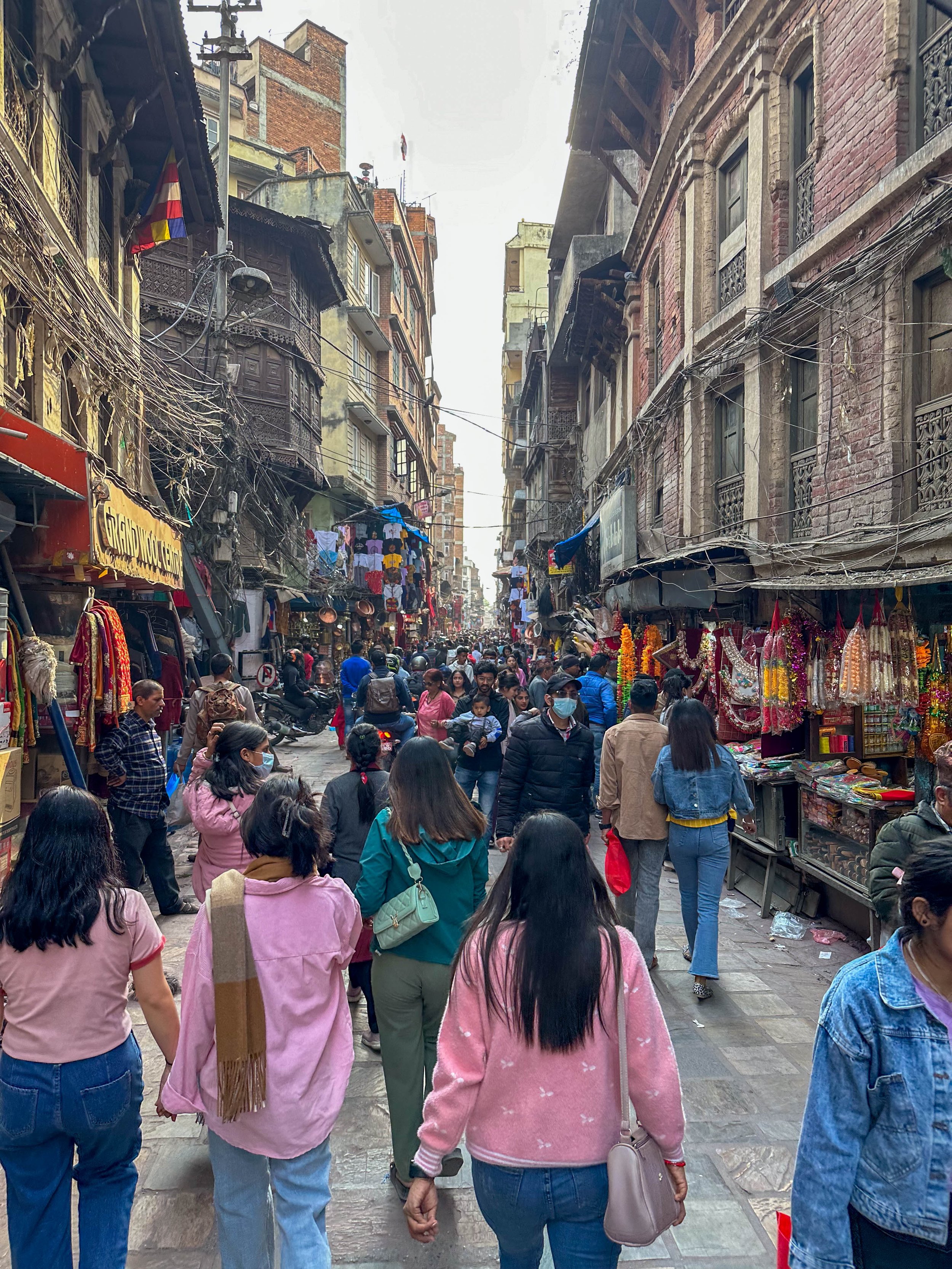
Once we had all the supplies we needed we left for Pokhara, the city closest to Annapurna. Annapurna is the 10th tallest mountain in the world and is basically in the middle of Nepal. Annapurna actually has many individual peaks, with the tallest named Annapurna I. Annapurna was the first peak in history above 8000m to be summited. Our planned route started a 1.5 hours drive from Pokhara in Nayapul. From there we would hike a loop in a clockwise direction to Annapurna Base Camp and then back down to Nayapul. What is amazing about the Himalayas is not just their height but also the rapid pace with which they rise up from the rest of the earth. Our starting point on our hike was at an elevation of 3,455ft and within 5 days we would be at the base camp of a 26,247ft mountain (Base Camp is only at 13,550ft).
To end the suspense now, no, we did not end up making it to Base Camp. We had legitimate excuses not to do the full circuit as the weather at Base Camp was getting worse than would be safe for us to go; It was below freezing even during the day with feet of snow coming down, and along the trail there was a constant threat of avalanches. But the truth is we were there for a nice hike, not a serious mountain climbing expedition, and we were not quite in the shape that we needed to be in to complete the full circuit in time. So our 10-day circuit turned into a 7-day circuit where we still did the entire loop, we just didn’t break off from Chhomrong to head up the pass to ABC (Annapurna Base Camp). As you’ll see and read about, what we saw was still one of the most incredible and awe-inspiring weeks of our lives.
Our first two days took us up the left side of the loop towards Poon Hill. We stayed in Tikedhungga our first night. The teahouse had some gorgeous views of terraced fields and the family fed us right from their farm, including fresh buffalo milk! Our second day to Ghorepani ended up being our most difficult day. We climbed up 4500 ft in 6 miles and it was basically all stairs… about 3200 steps which is 267 flights of stairs! Talk about tired legs coming into the village that night.
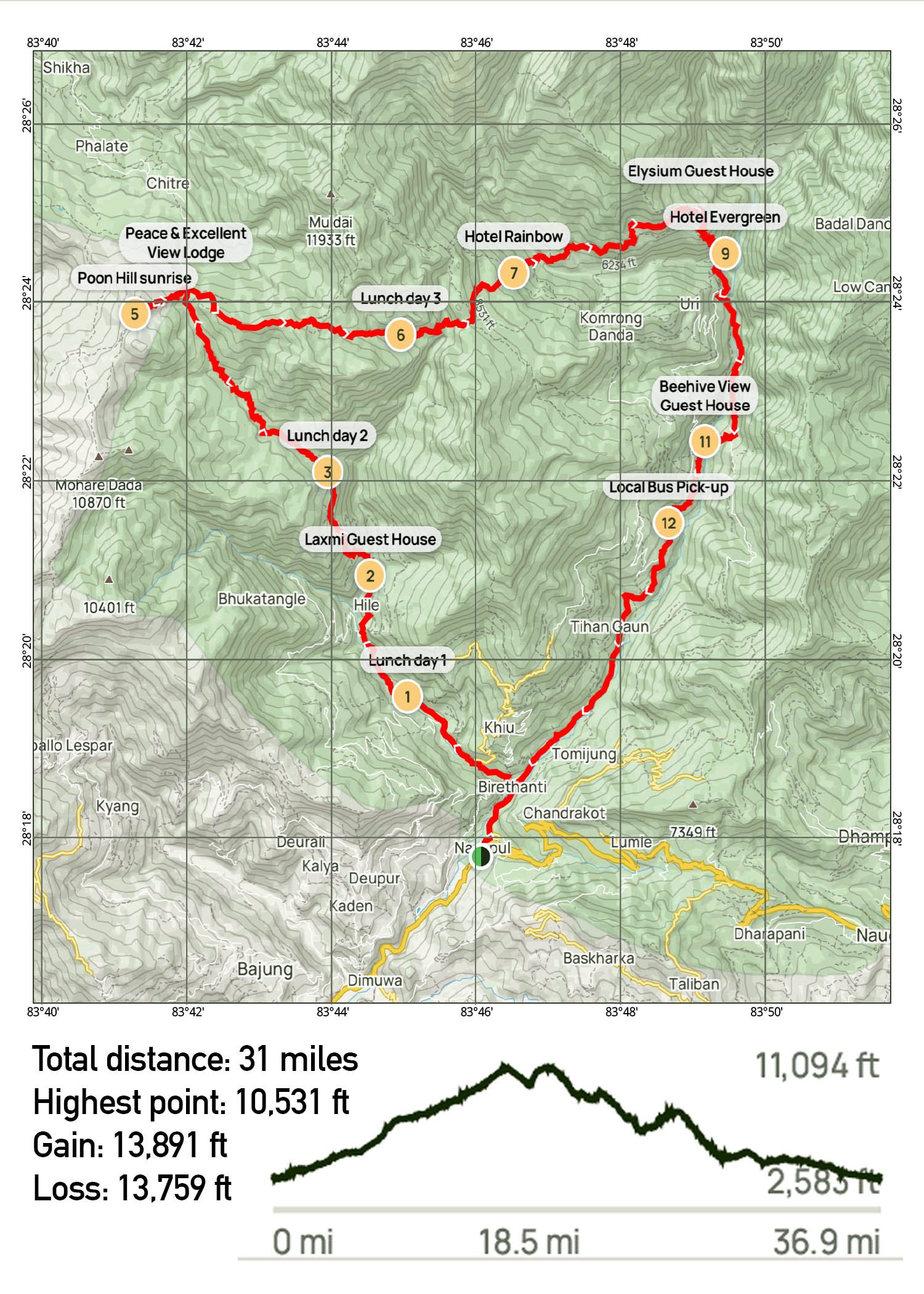
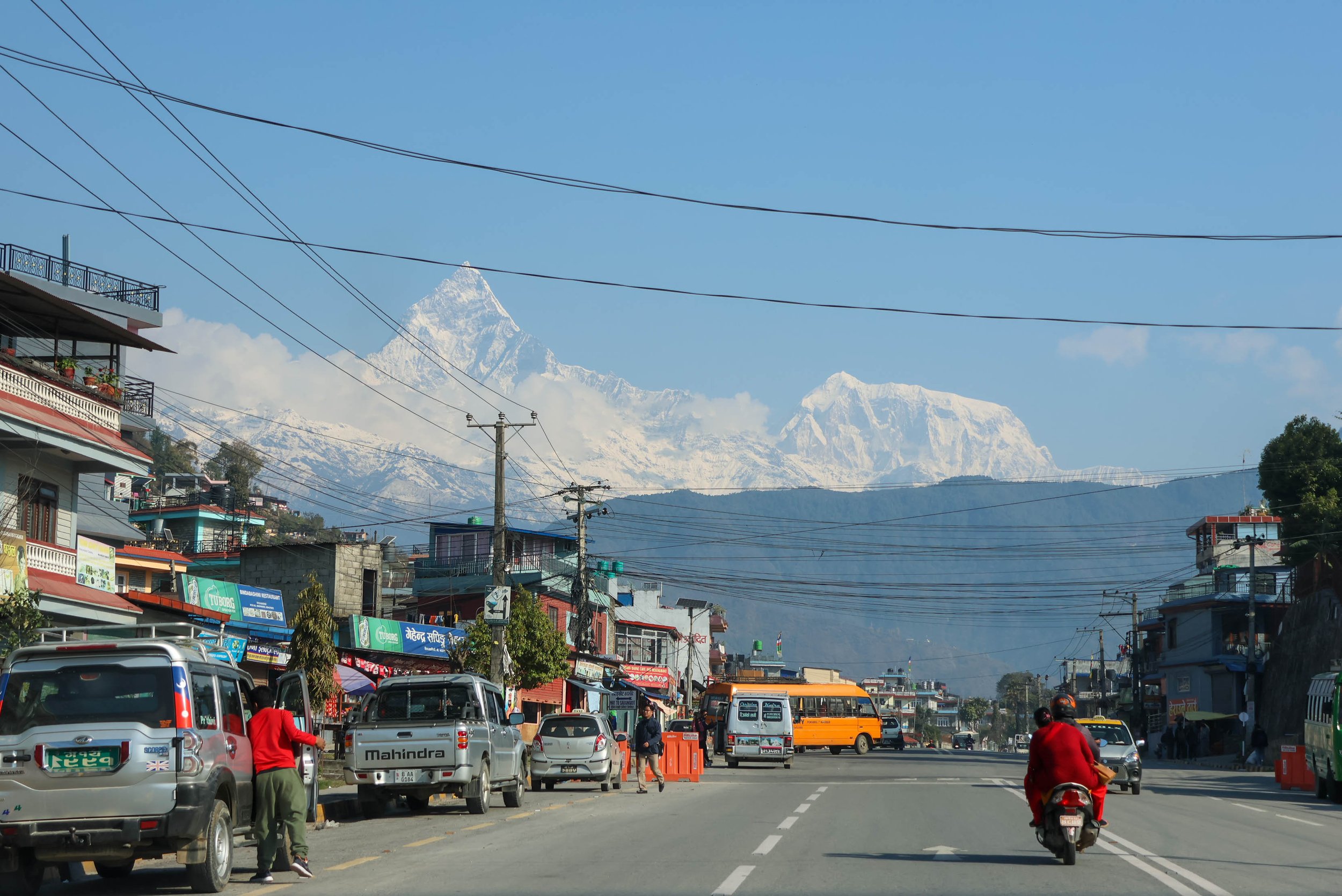
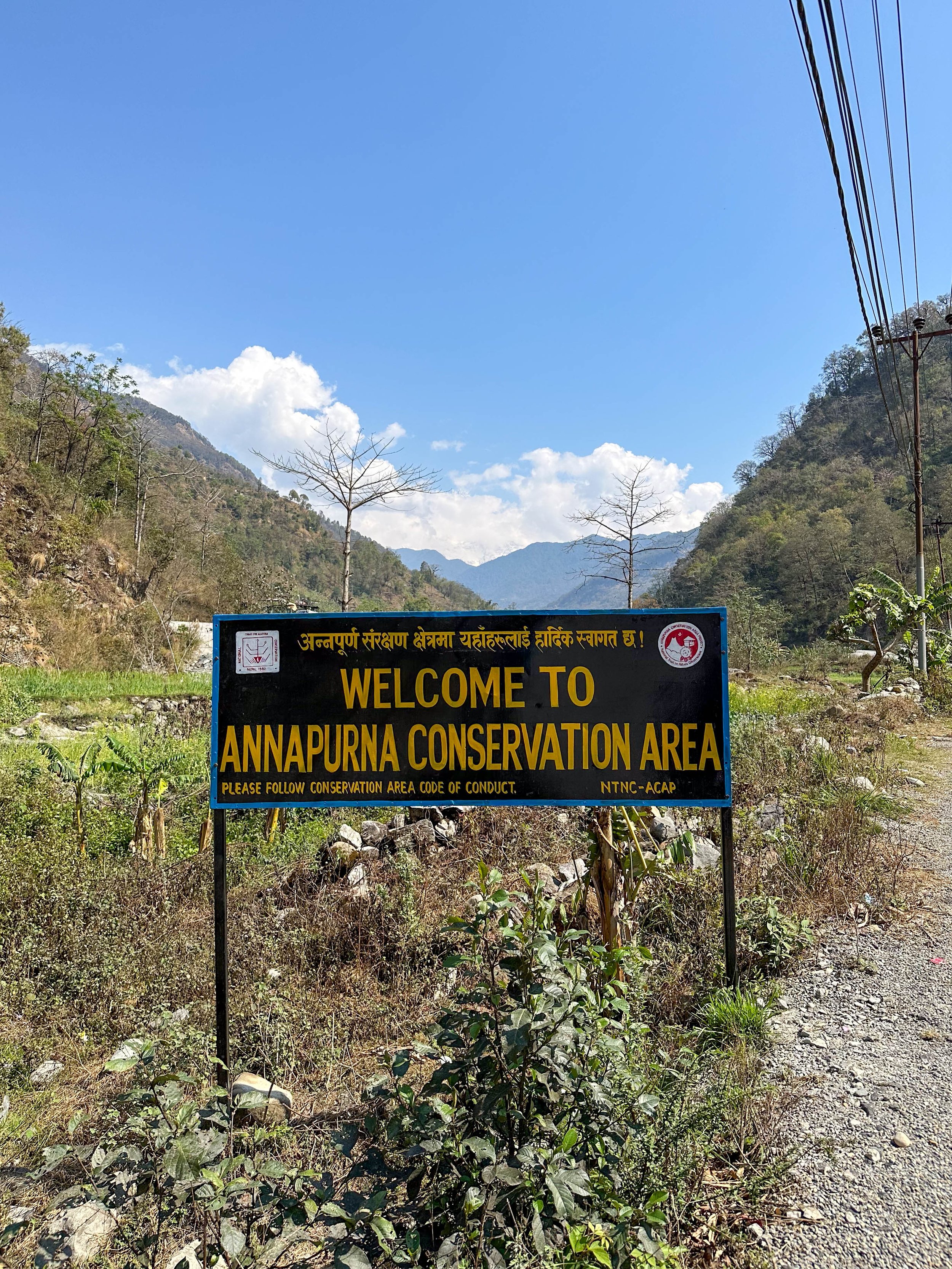




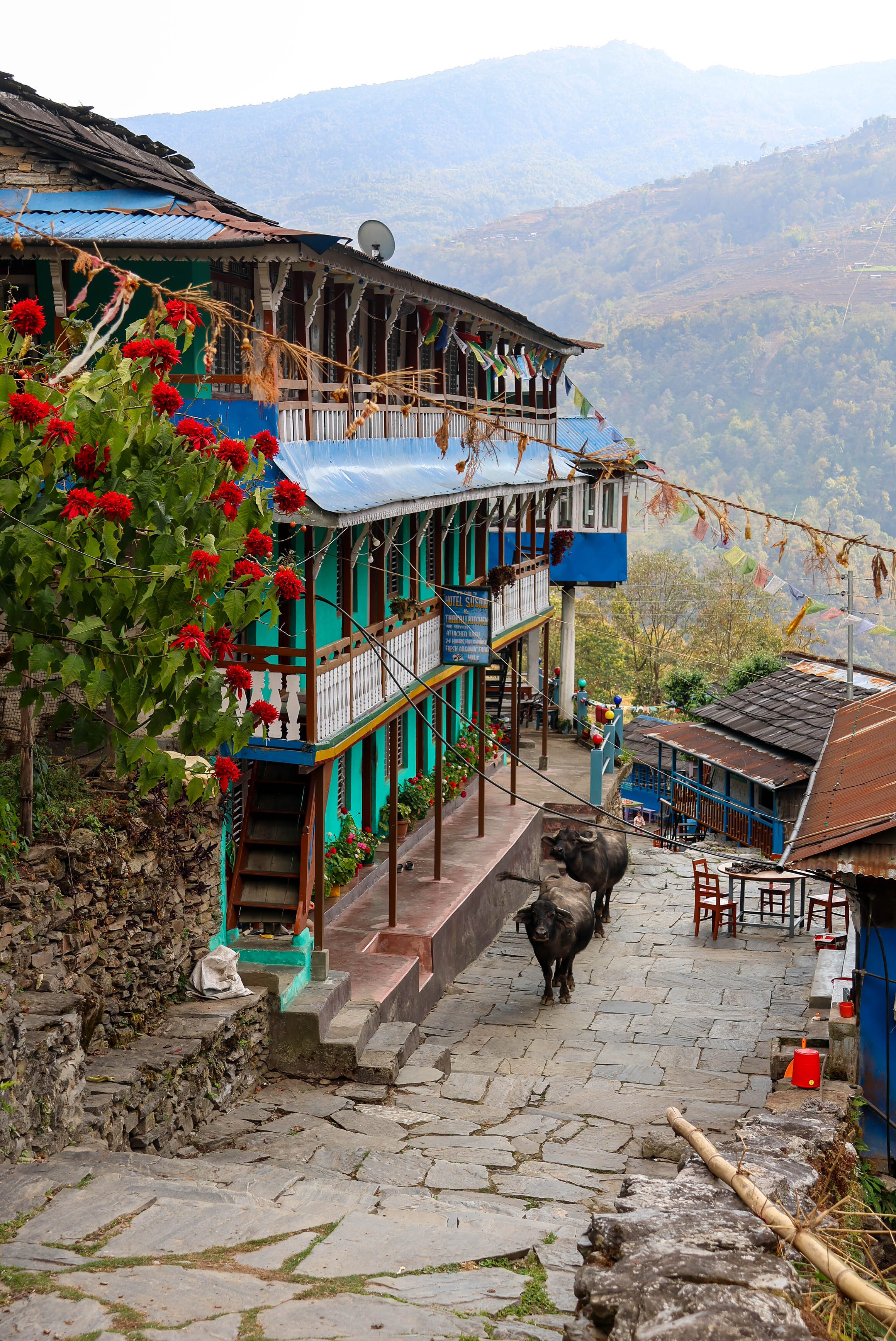
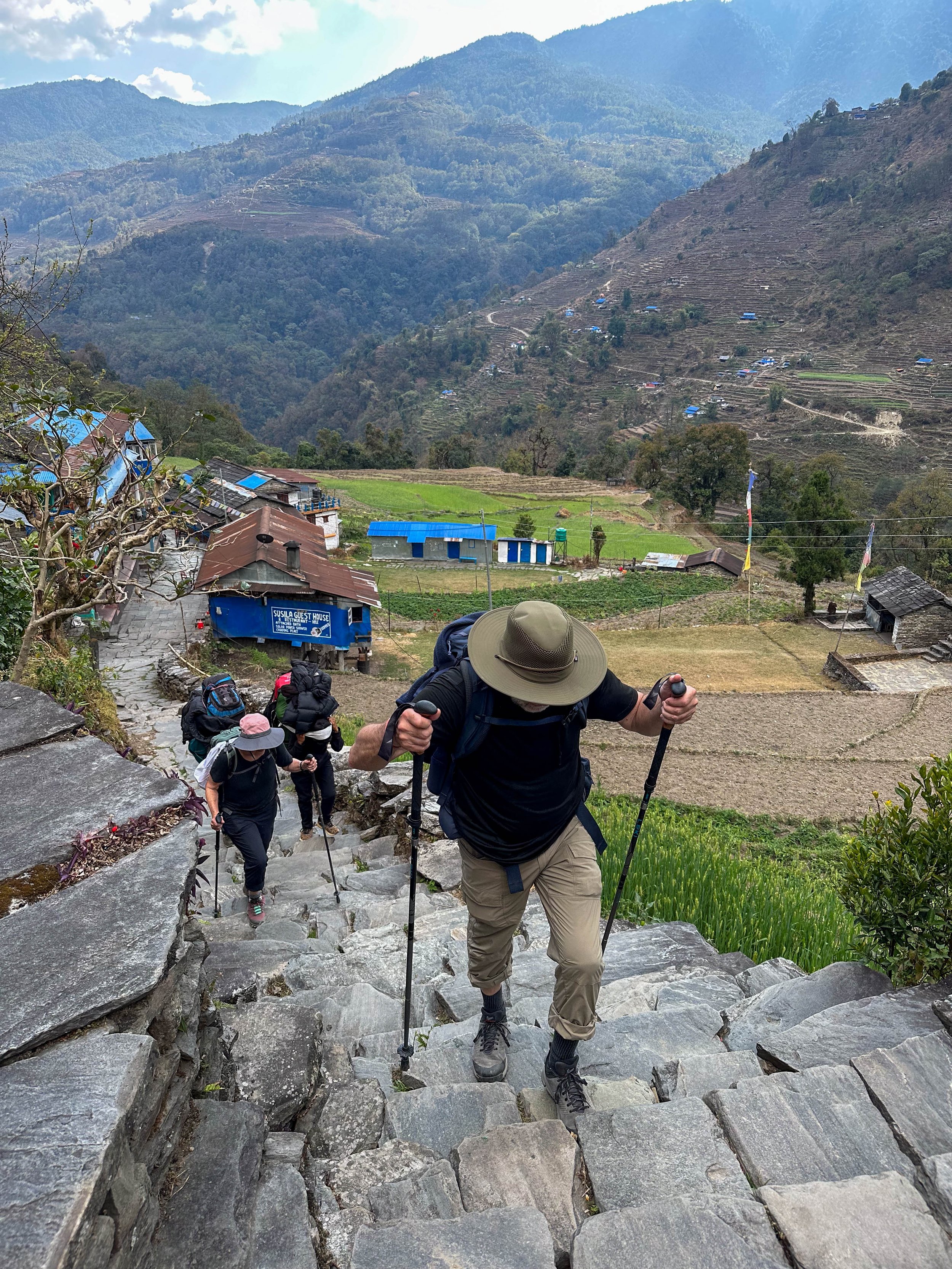


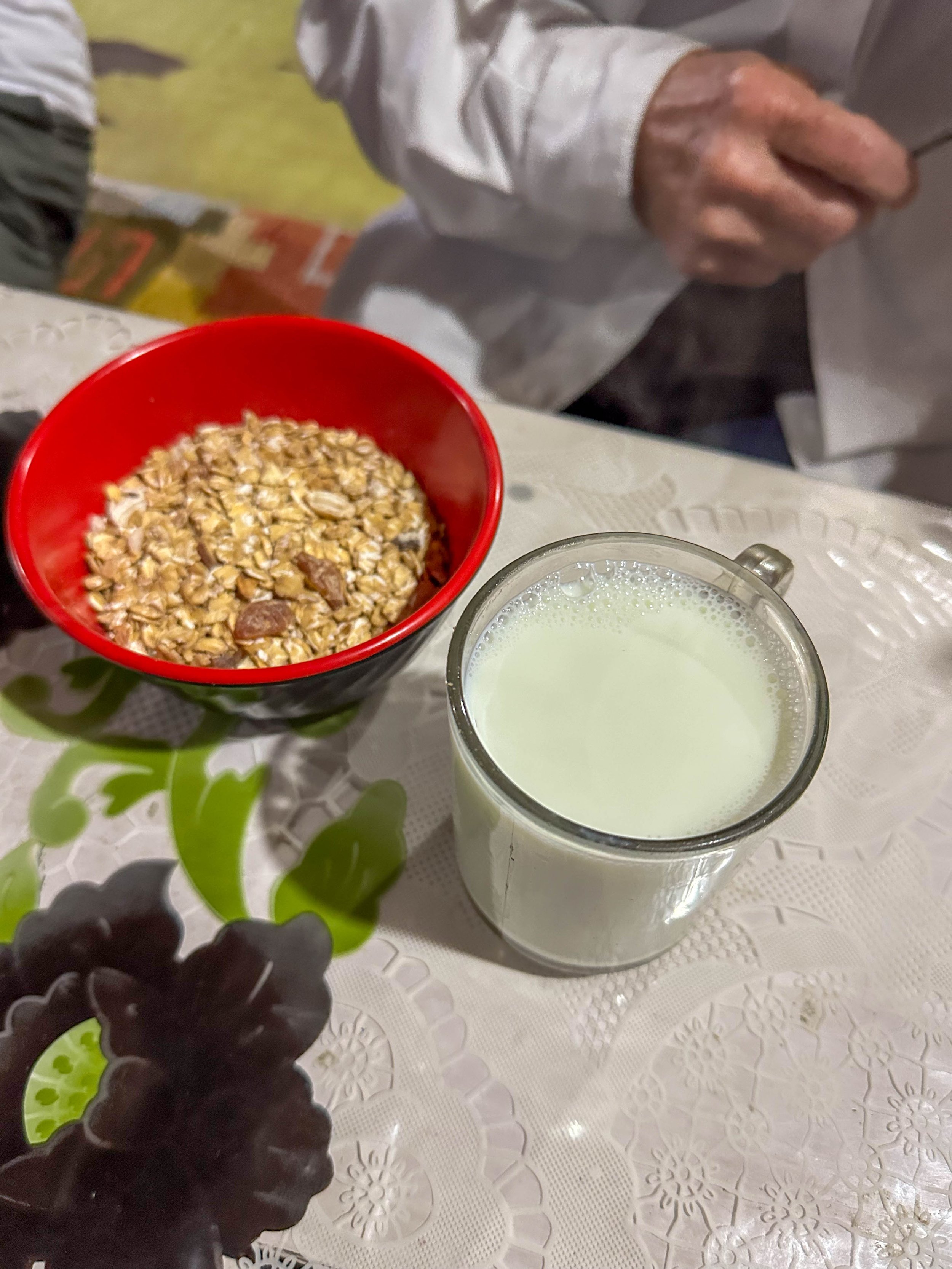

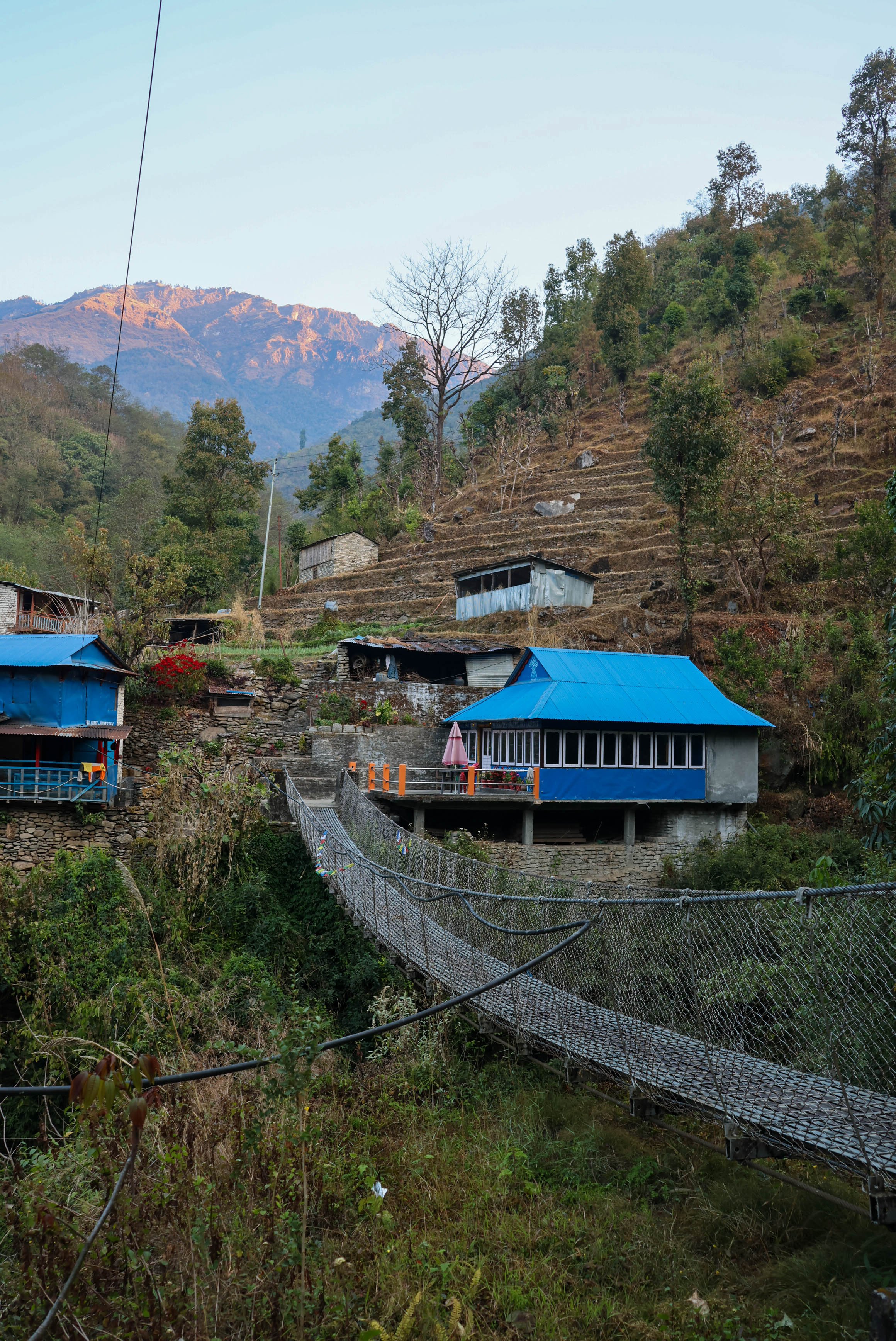



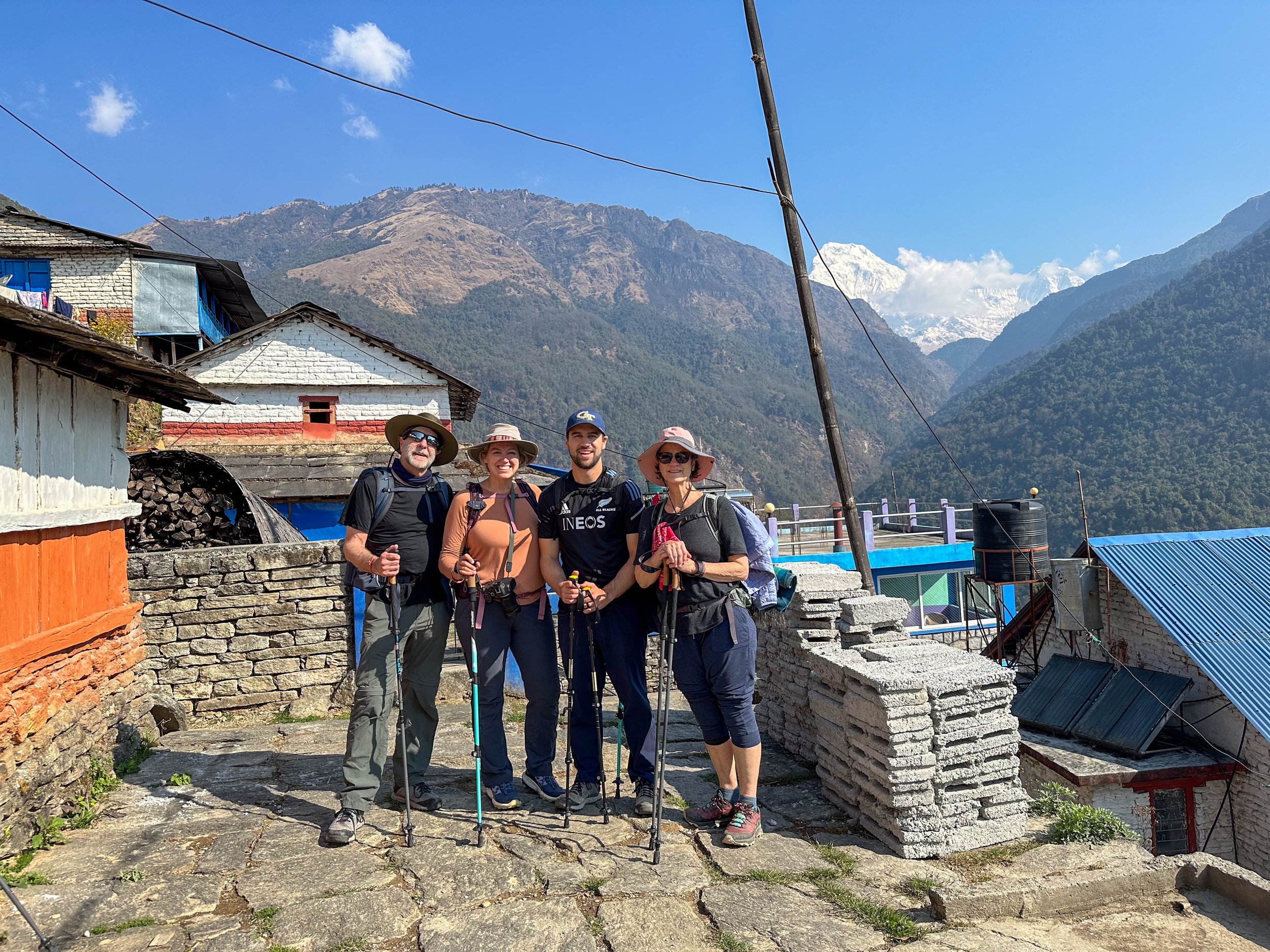


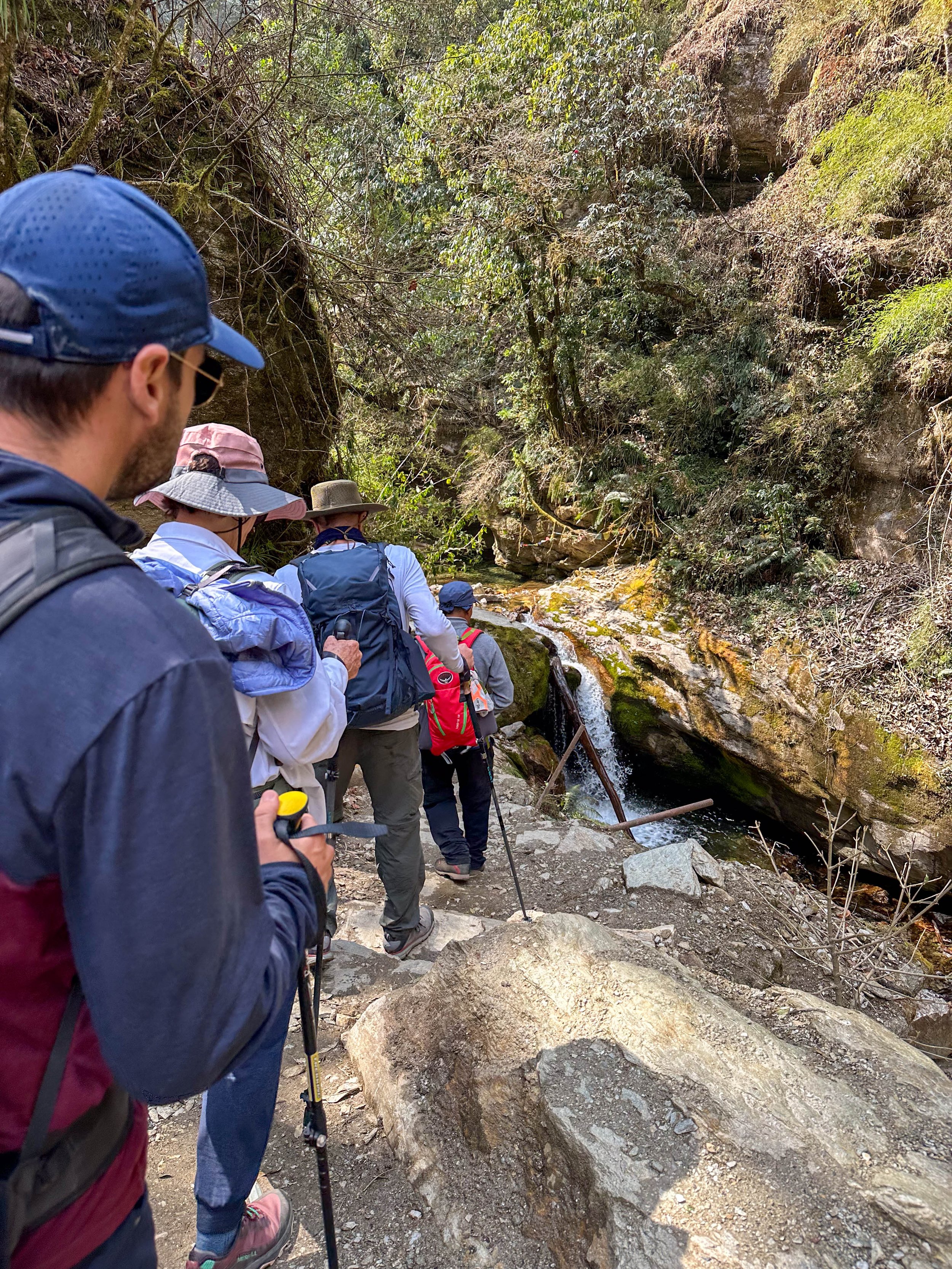

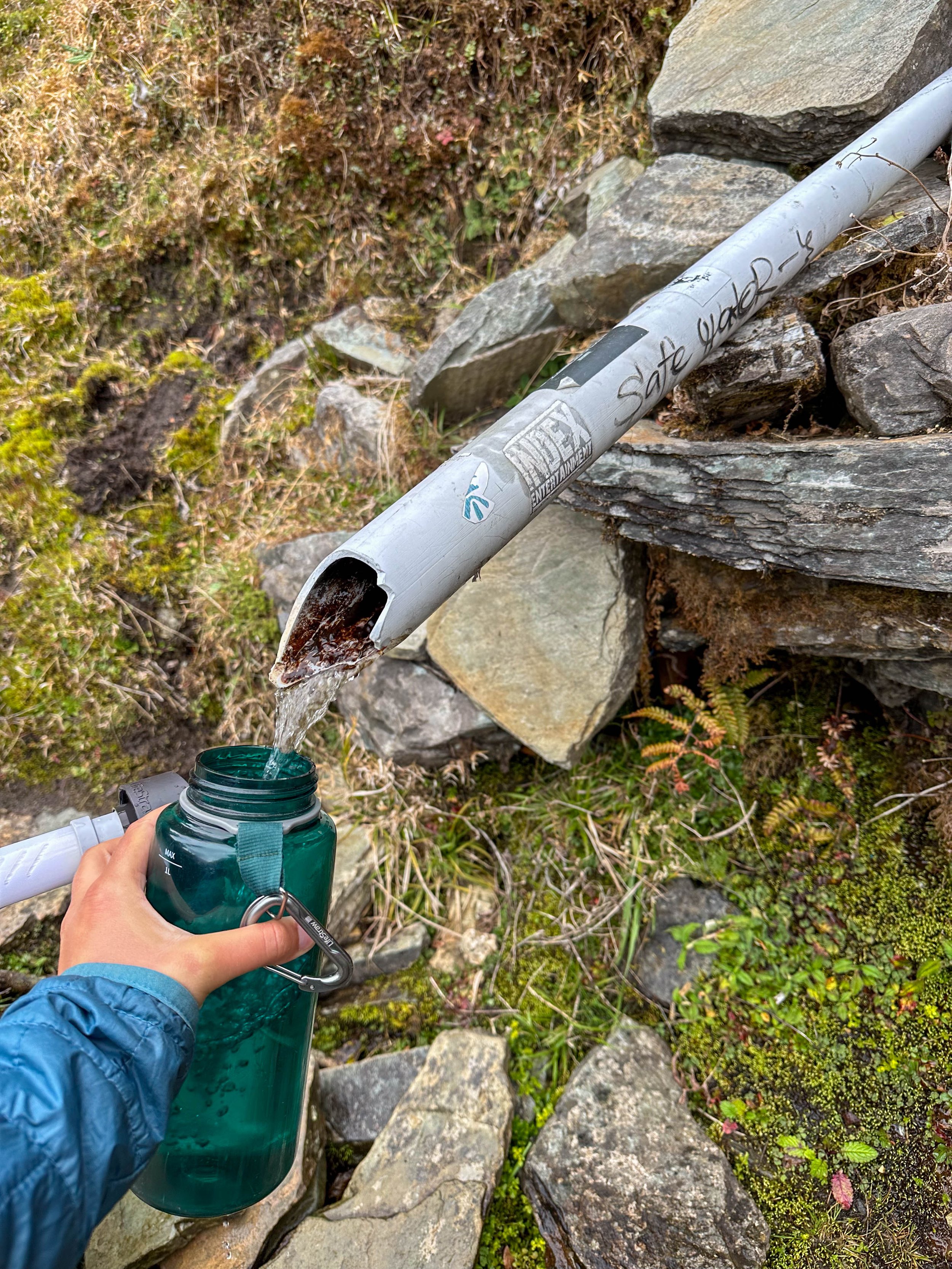

On our 3rd day on the trek, we did a sunrise hike from Ghorepani to Poon Hill. It is a 1200 ft elevation hike at 4:45am to make it to the top for sunrise. This was after hiking for 9 hours and all of the stairs the day before. It’s also when we got our first hint that maybe we weren’t cut out for trekking our original route to Base Camp. As Matt’s Mom said, “it was kind of silly of us to think that hiking up Kennesaw Mountain a couple of times would prepare us for the Himalayas!”. The sunrise views from Poon Hill were amazing though. There were a decent amount of clouds so it was tough to get a clear view of all the peaks but we did get some beautiful shadows and colors from the sun coming up. From Poon Hill, we could see Dhaulagiri (the 7th tallest mountain in the world), a couple peaks of Annapurna, and Fish Tail (actually called Machapuchare but it looks like a fish’s tail). In addition, we could see down into the valley to the villages scattered along the sides of the hills. As we continued to hike throughout the next few days, we would randomly turn a corner of the trail and be surprised with an incredible view of the snow-capped mountains. It was stunning to see and always caught us off guard!
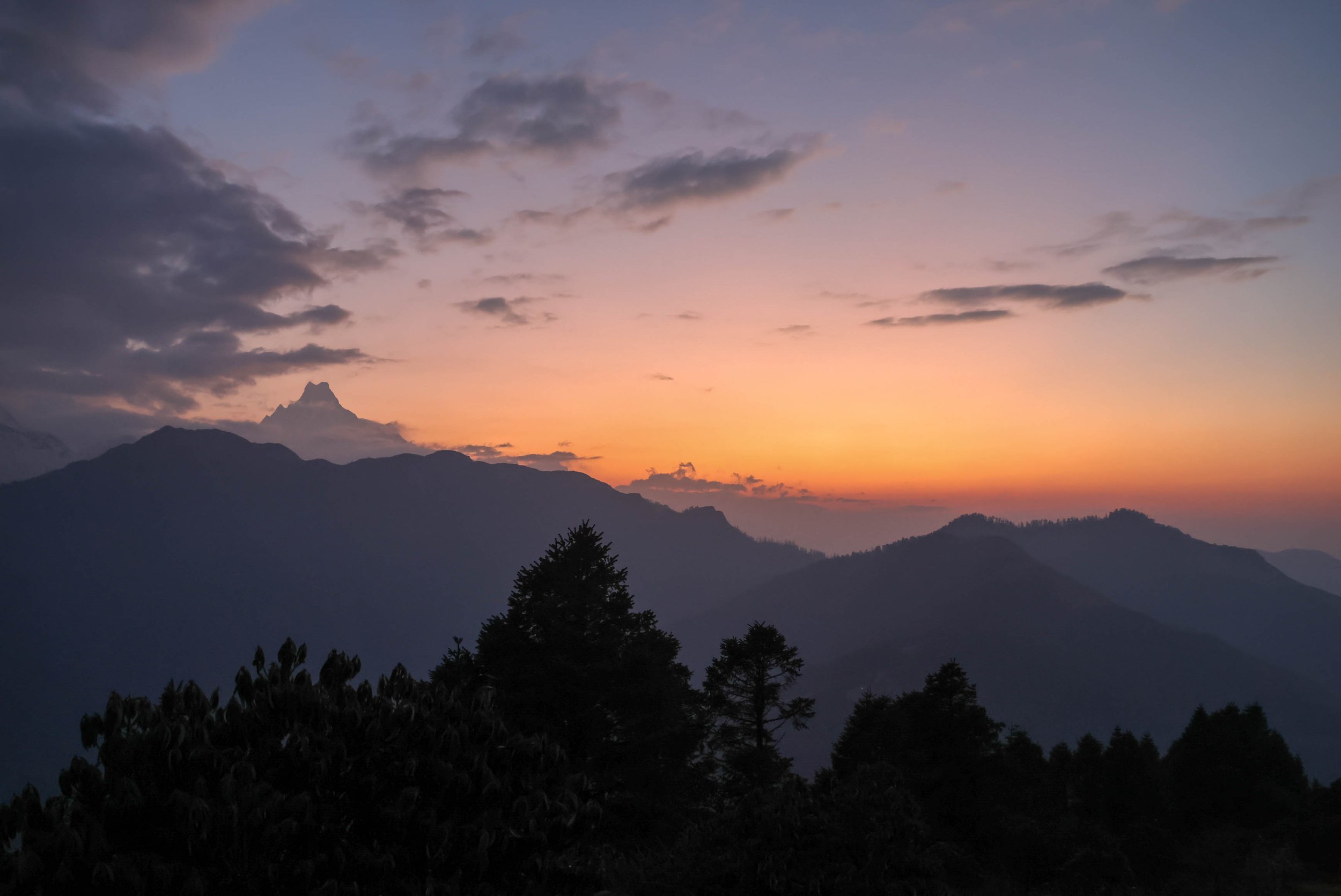
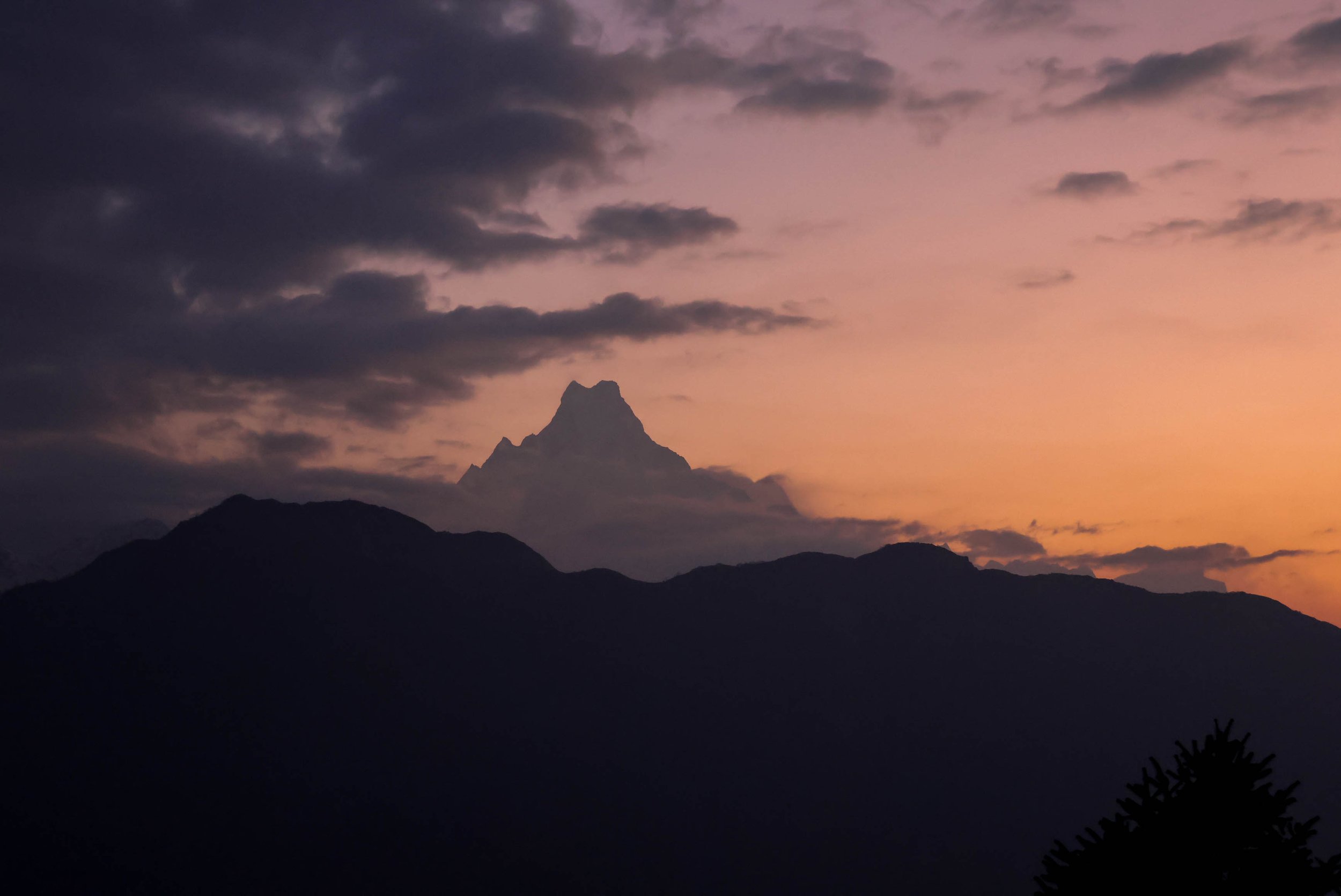
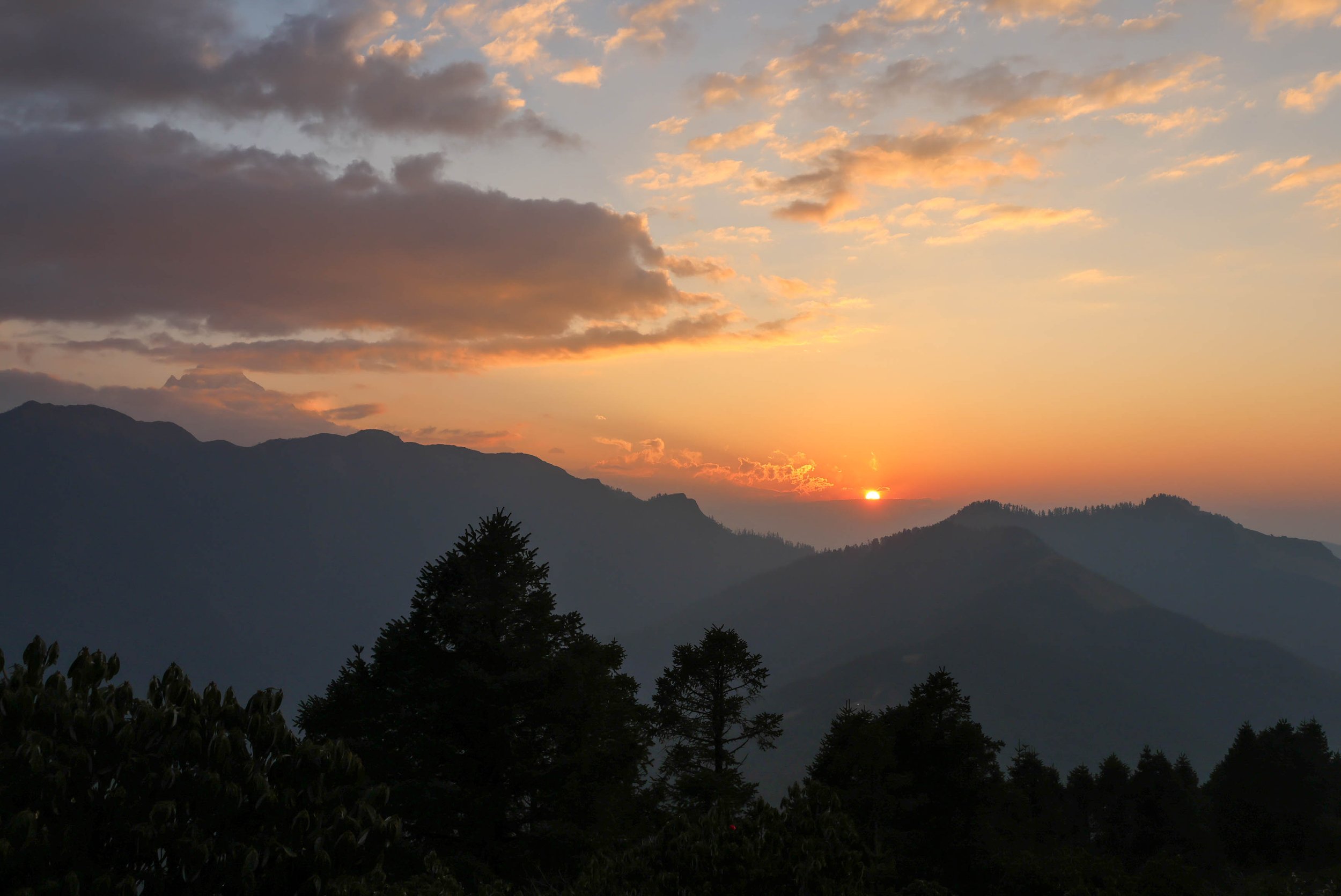
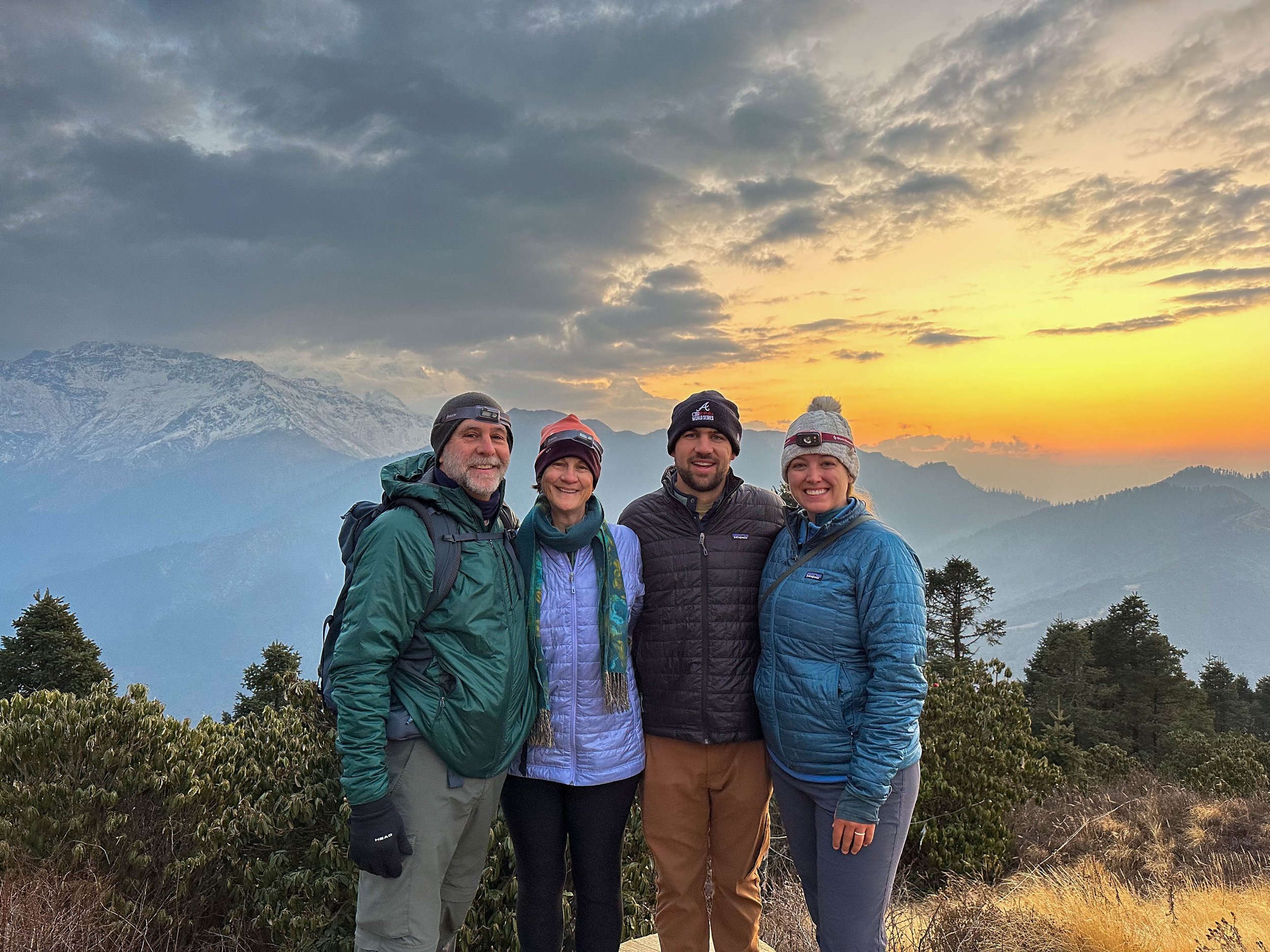




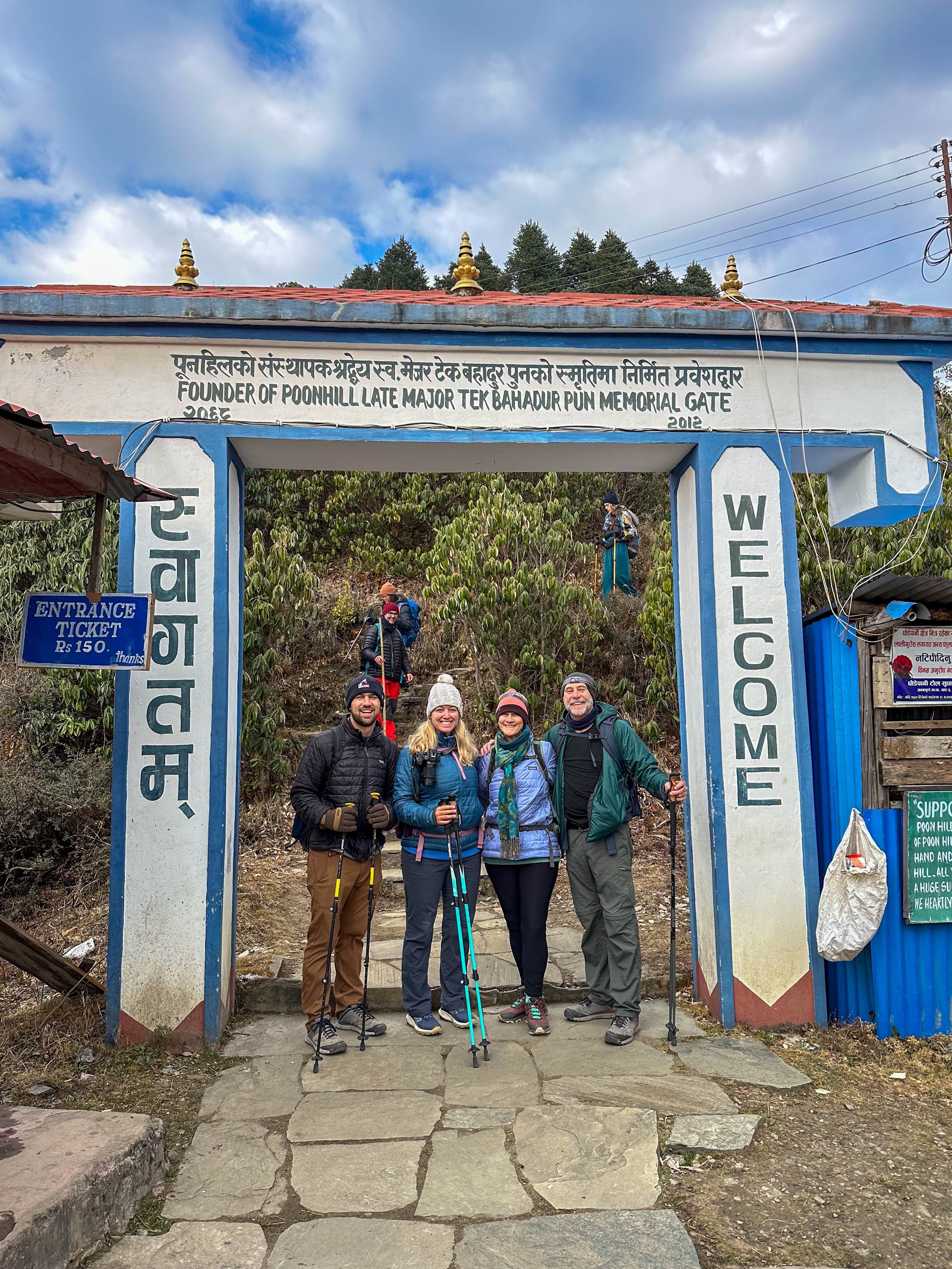
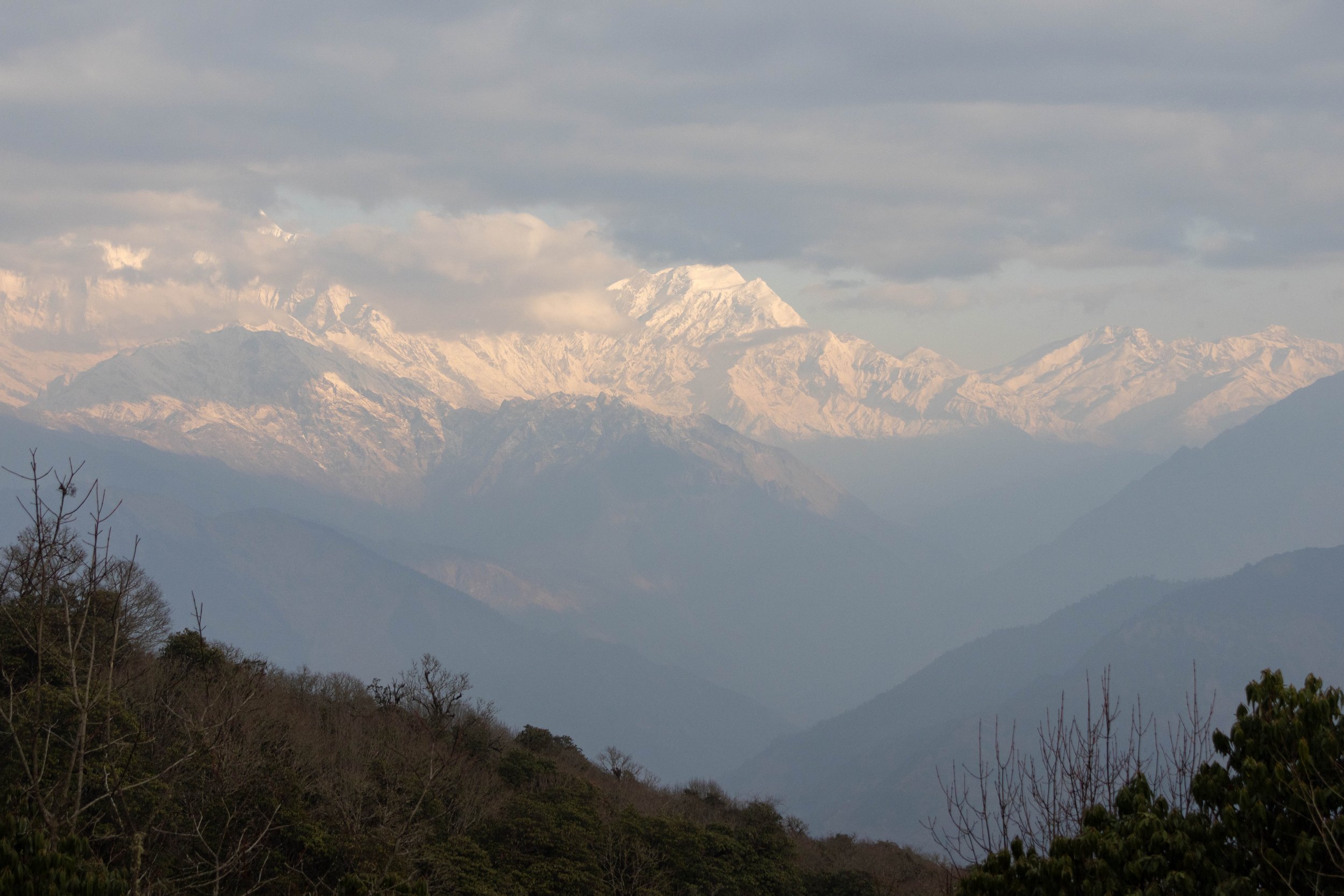

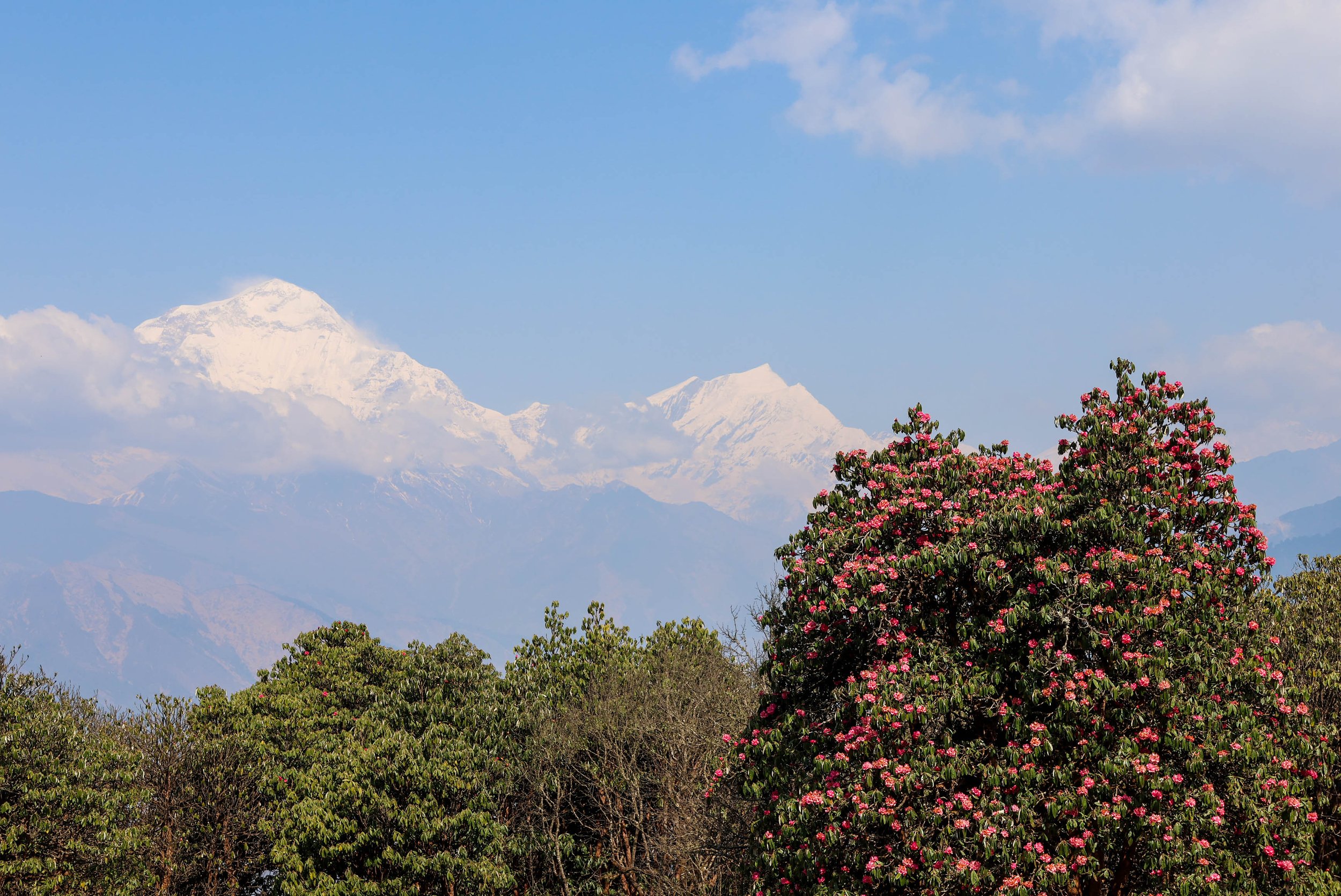


The star of the trekking is obviously the mountains themselves. The peak of Annapurna I and Fishtail Mountain dominate the views throughout the hike. It is tough to put into words the drastic height that these mountains possess. At our stay in Chomrong, which is a village near the Annapurna Base Camp and the closest we got to the peak, we had a patio with a view of Annapurna I. When we first arrived there were clouds around the peak, as was common in the afternoon, so we couldn’t see the top of the mountain through all the clouds. When the clouds started to break up, we realized that where we had been looking in the clouds to see the peak was only about halfway up from where the actual peak was! It was stunning to see the actual peak of the mountain and have it rise up even higher than you could have imagined just minutes ago. We woke up for sunrise at this teahouse the next morning to enjoy an uninterrupted view of the Annapurna peaks and it was amazing. We just sat in our chairs, under blankets, and sipped warm tea until it was time for a late breakfast.

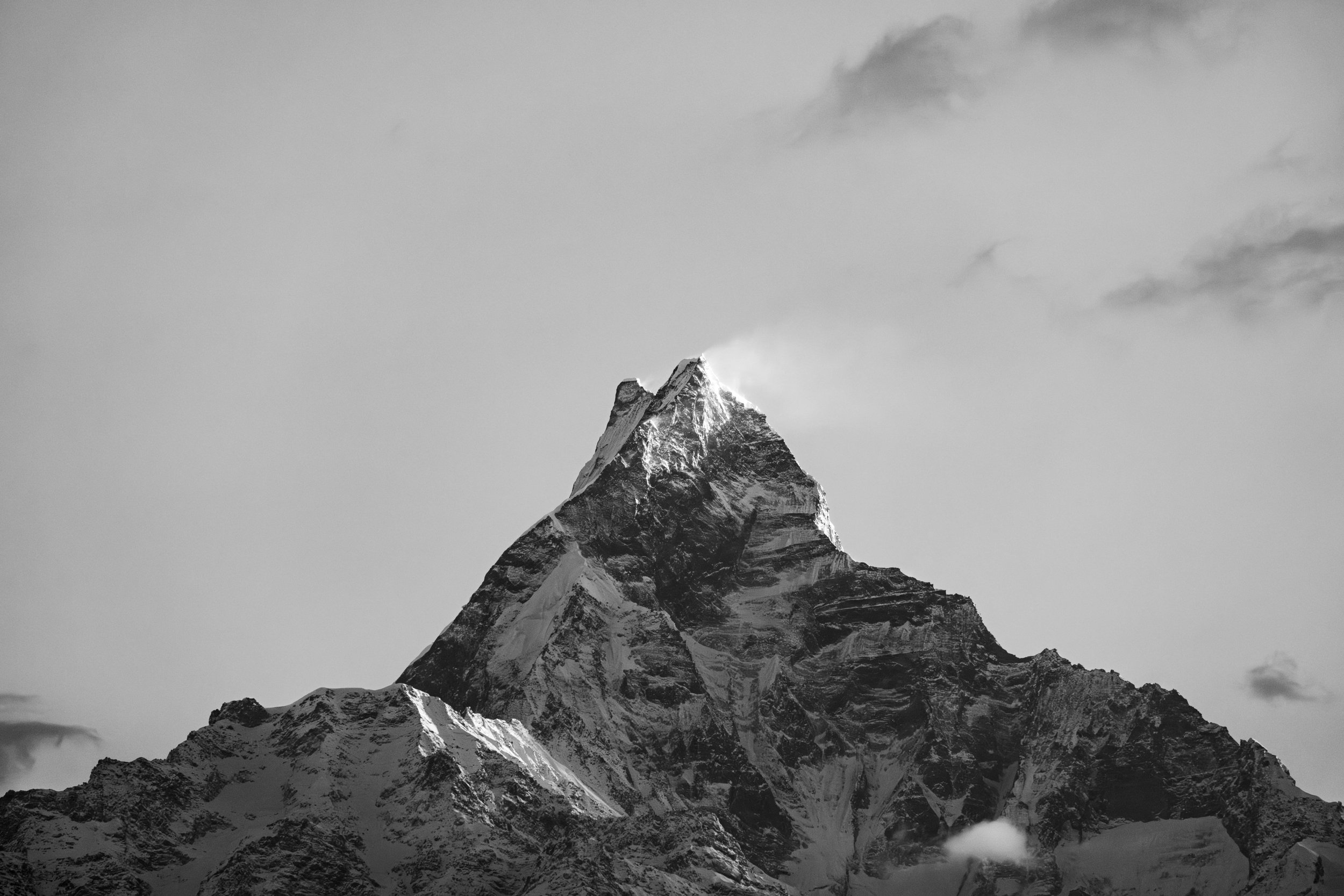


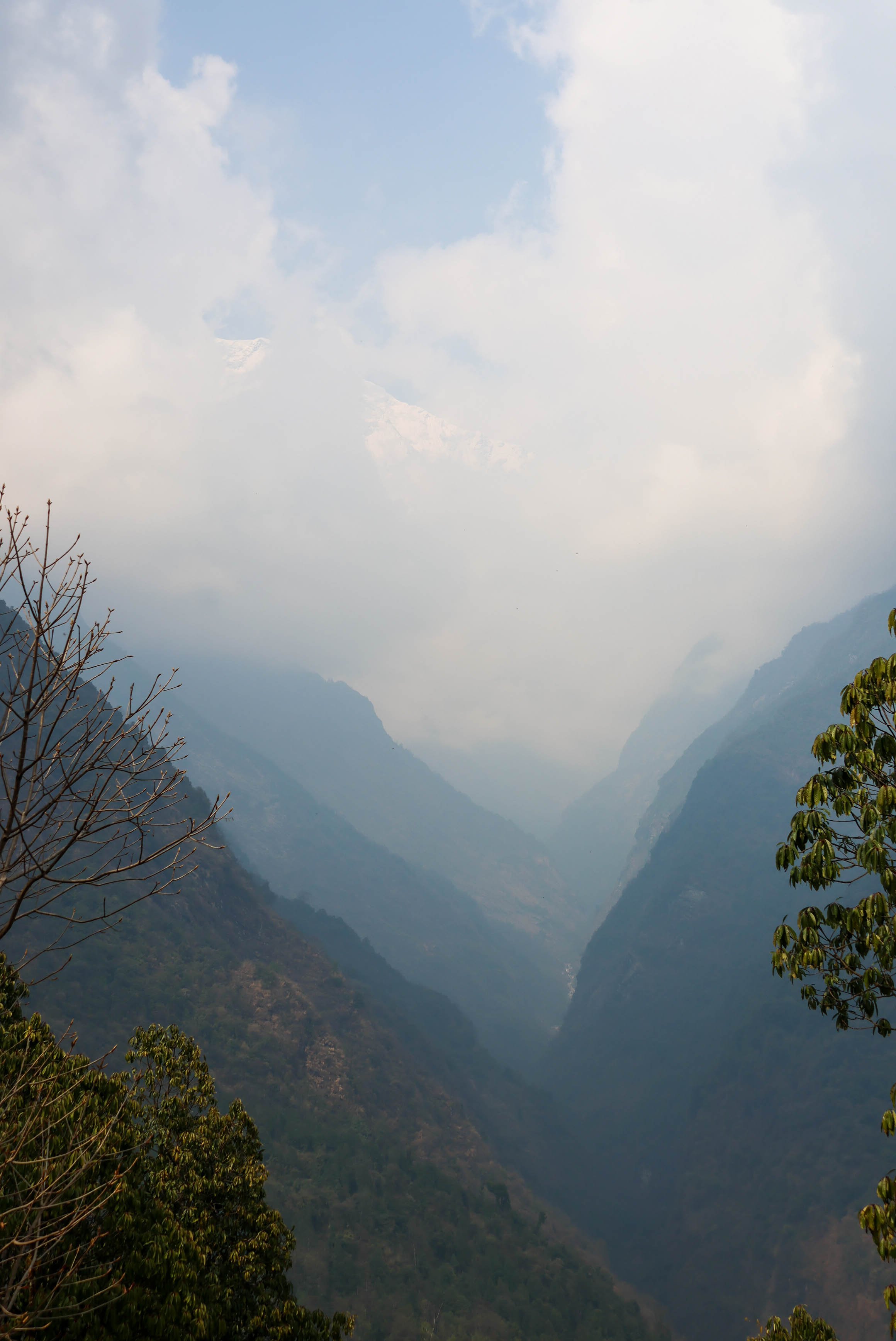

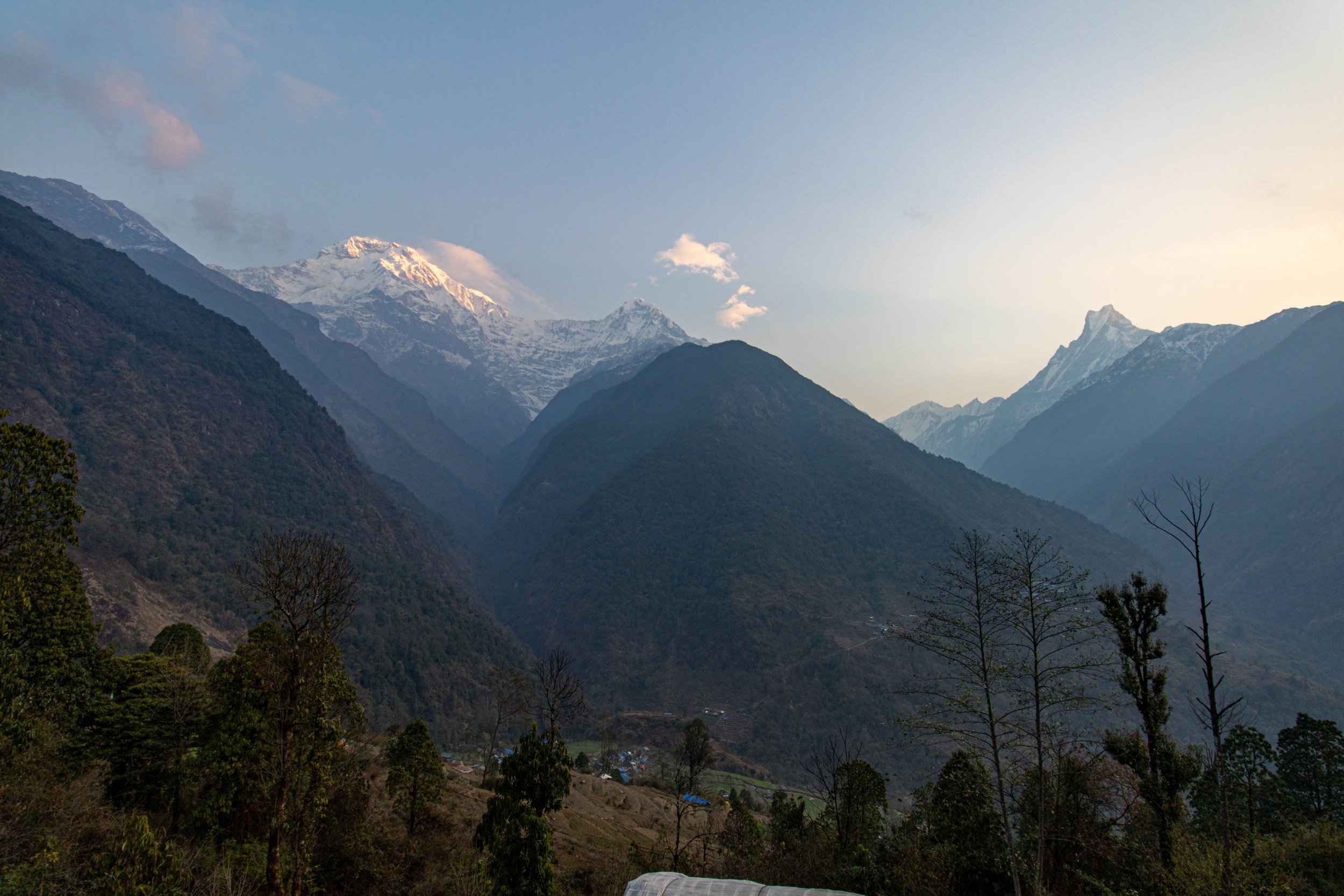

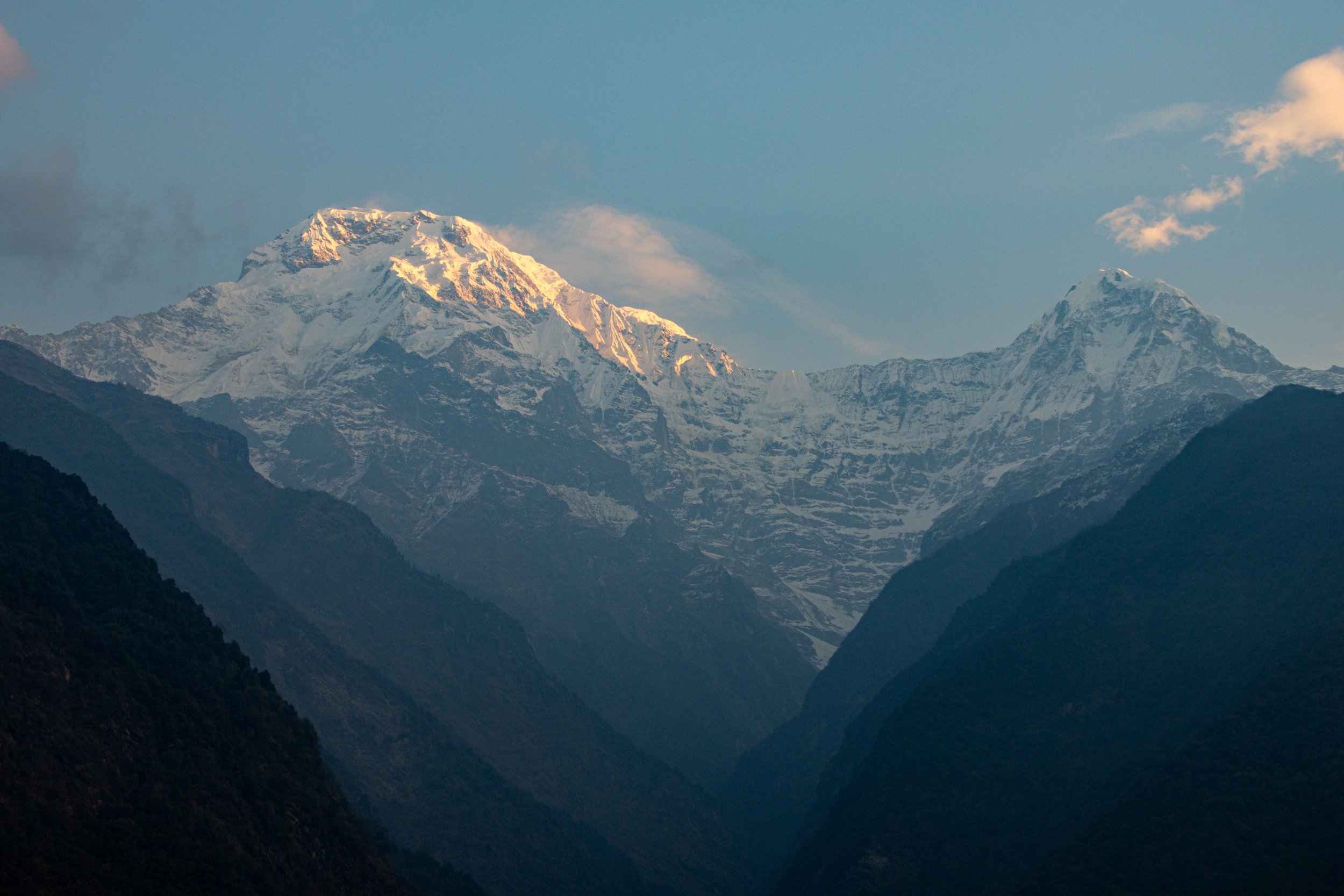
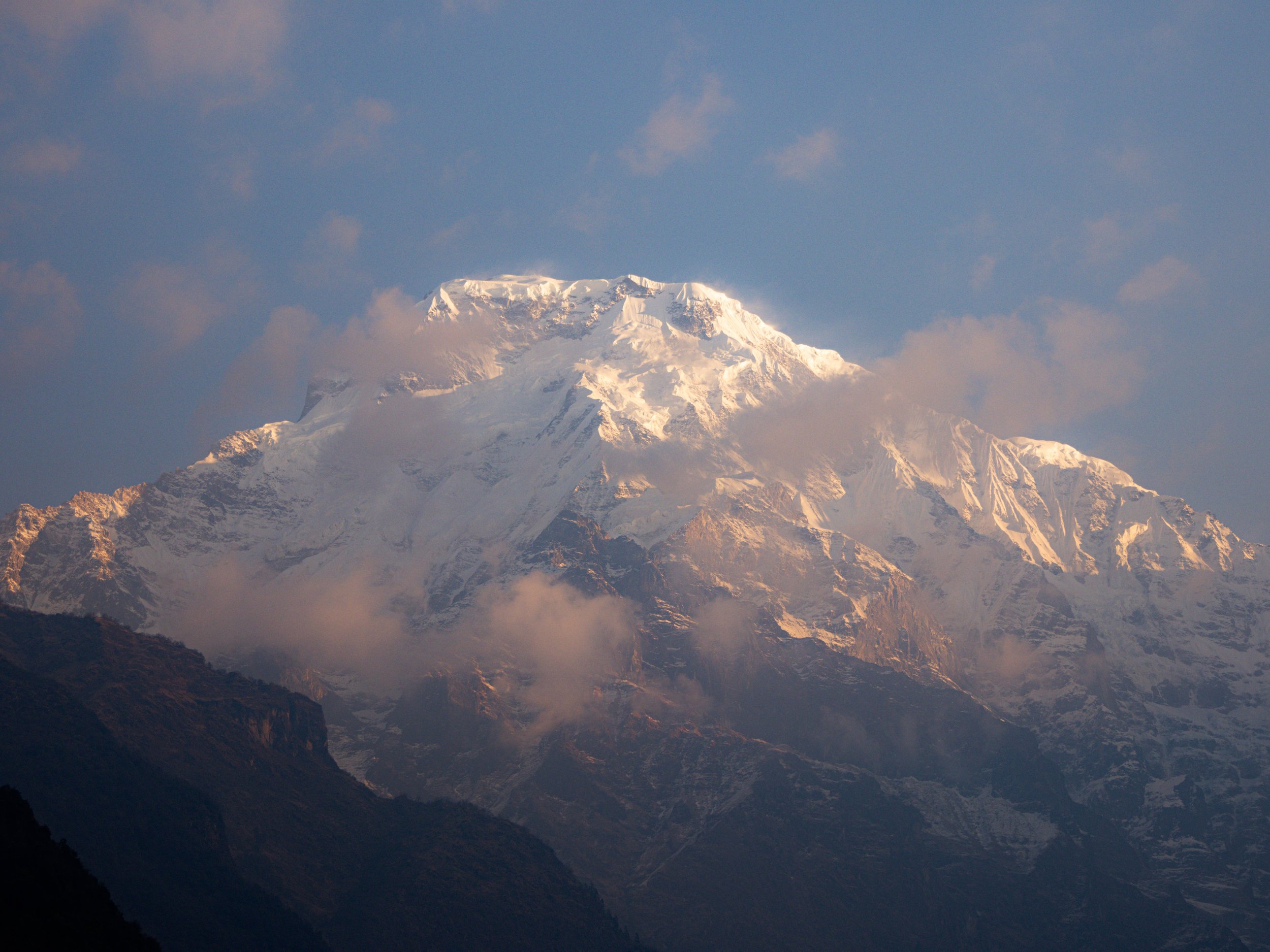





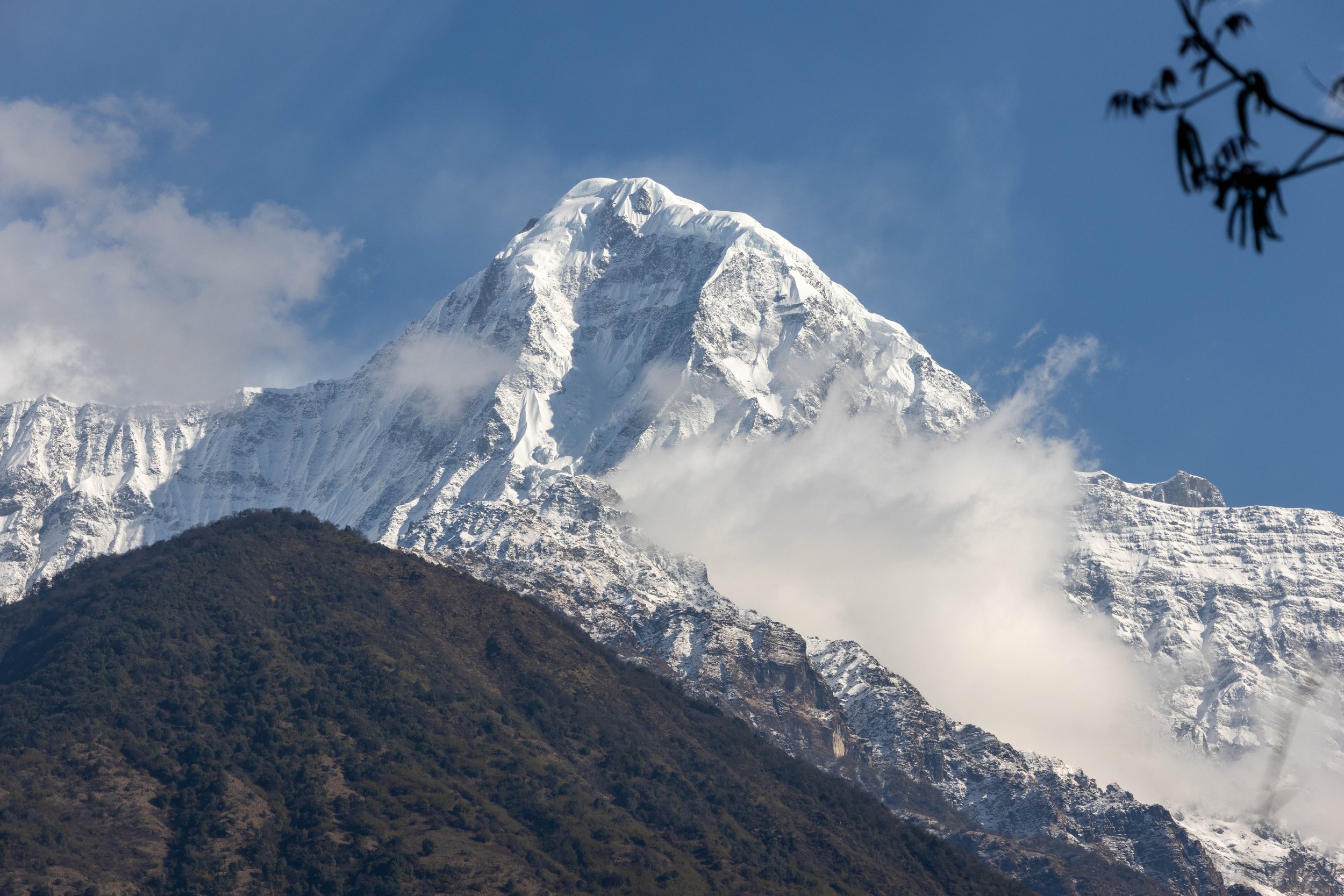

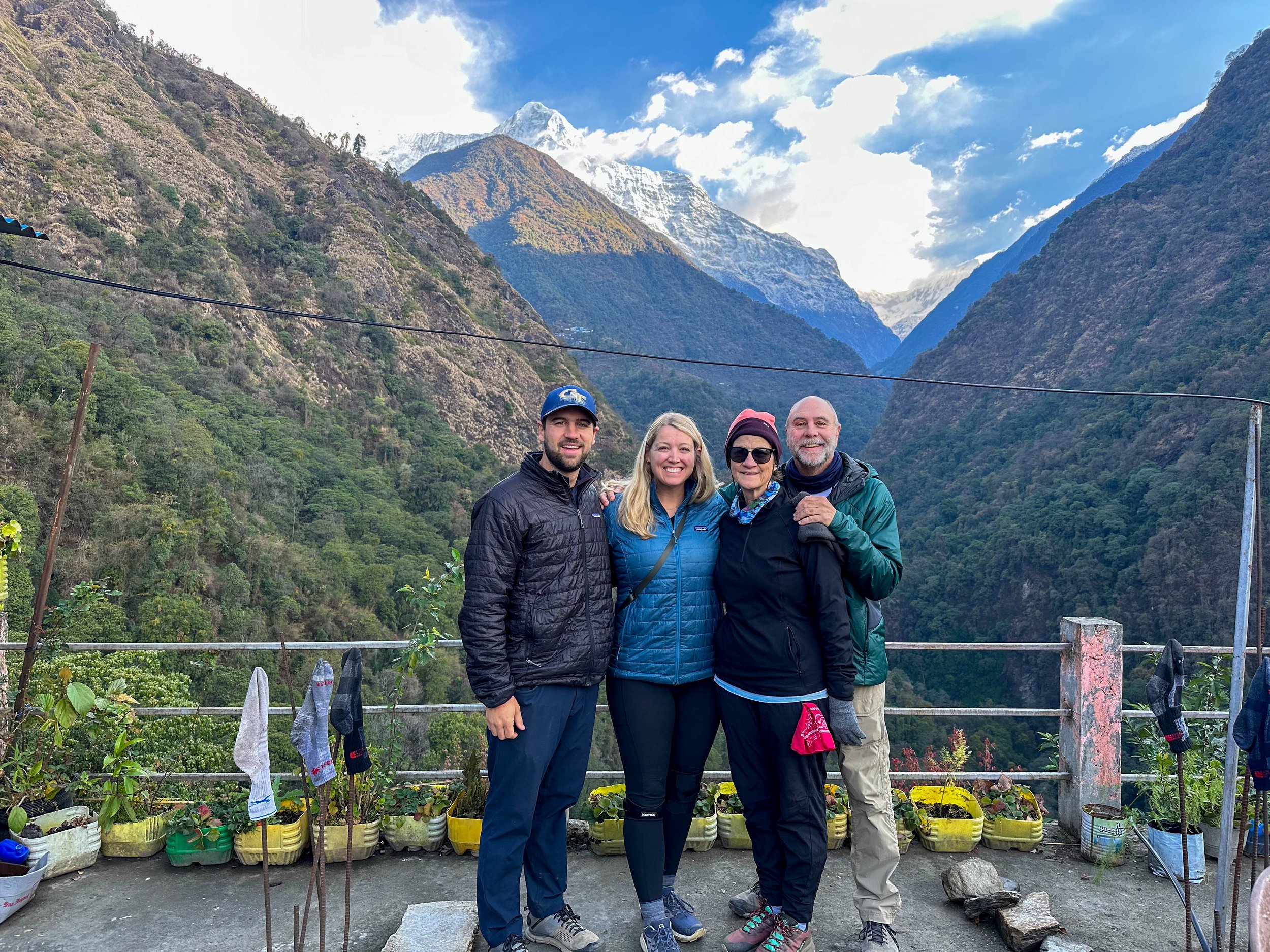
The trails themselves were also beautiful. Every 2 hours or so we would walk through another village that had existed for 100s of years. The villages contained beautiful stone walkways and staircases in addition to ancient homes with also some modern buildings for use as tea houses for the trekkers. We passed farmers tilling their land and picking their crops, students on the way to the local school, grandparents playing with toddlers while their parents worked in the fields, and plenty of farm animals out for a stroll. Outside of villages there was plenty of terraced farming happening on almost every hillside. We walked past many rivers and streams and were lucky to be able to cross over many new steel suspension bridges. In the areas where farms hadn’t taken over there were plenty of trees including beautiful rhododendrons blooming with a deep red color in their flowers. In some stretches of forest, the ground was already getting covered with flowers that had bloomed from the trees. There were plenty of rocky cliffs and ragings rapids along the trails. We were hiking just before the monsoon season so the rivers weren’t very high in most places.
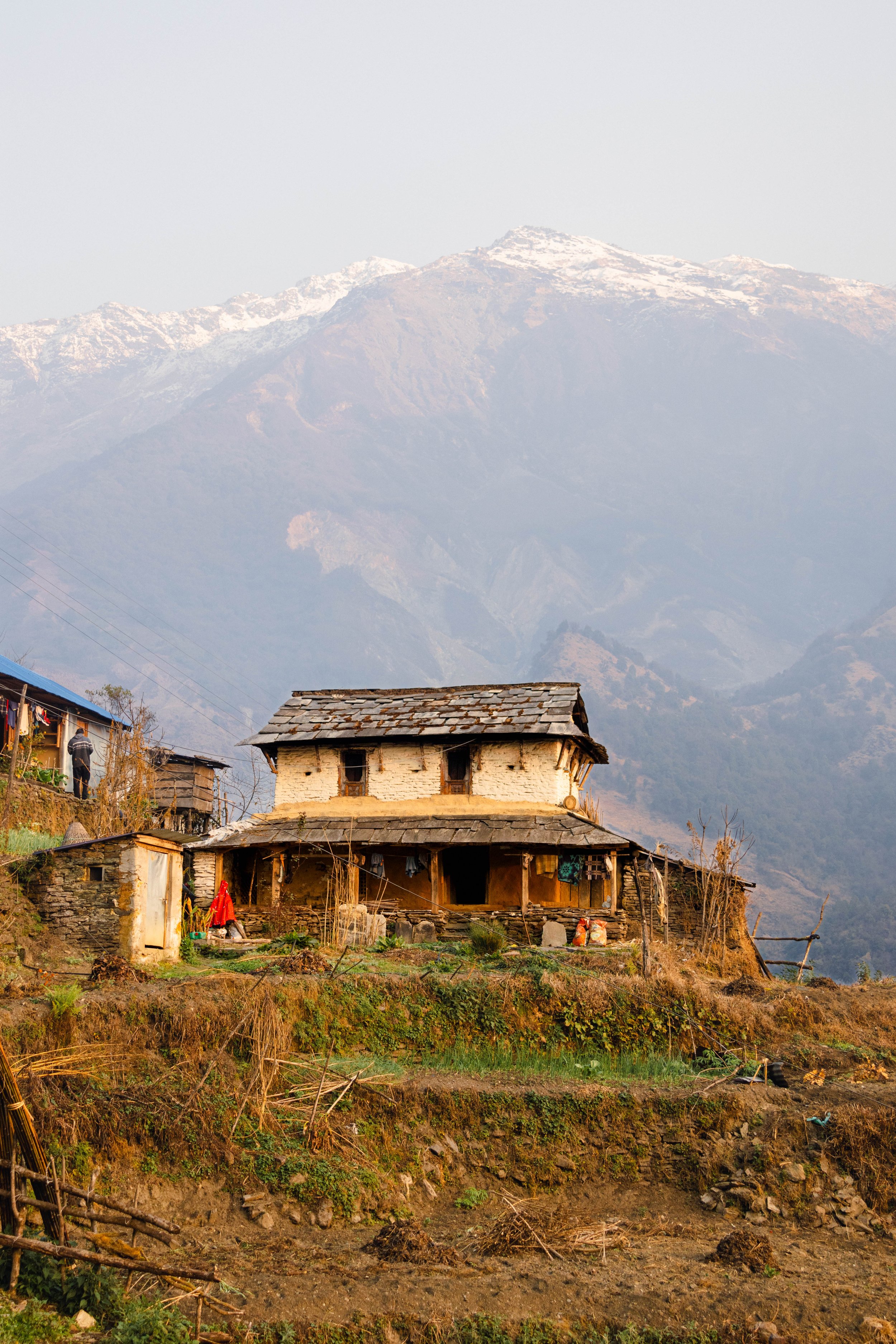




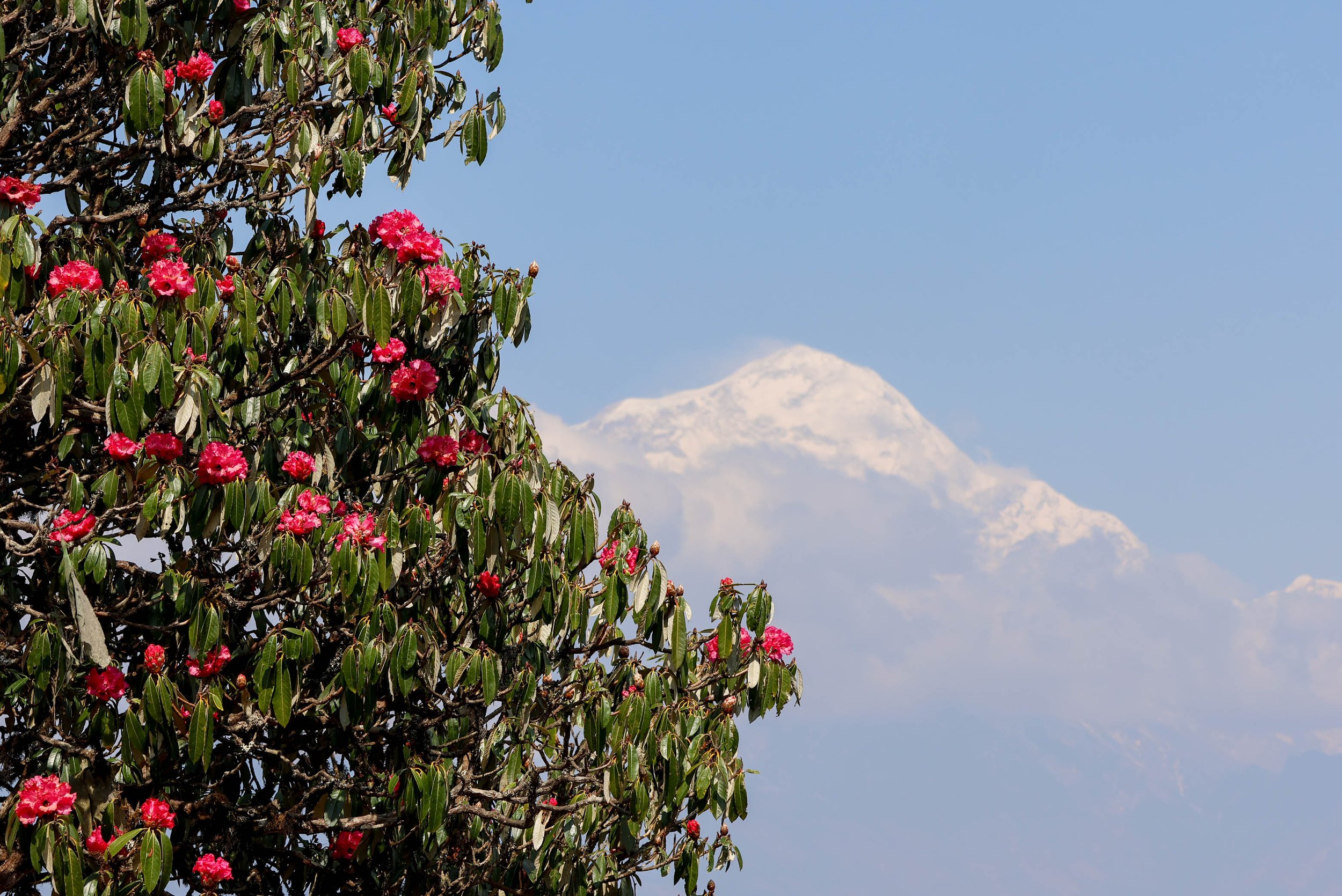
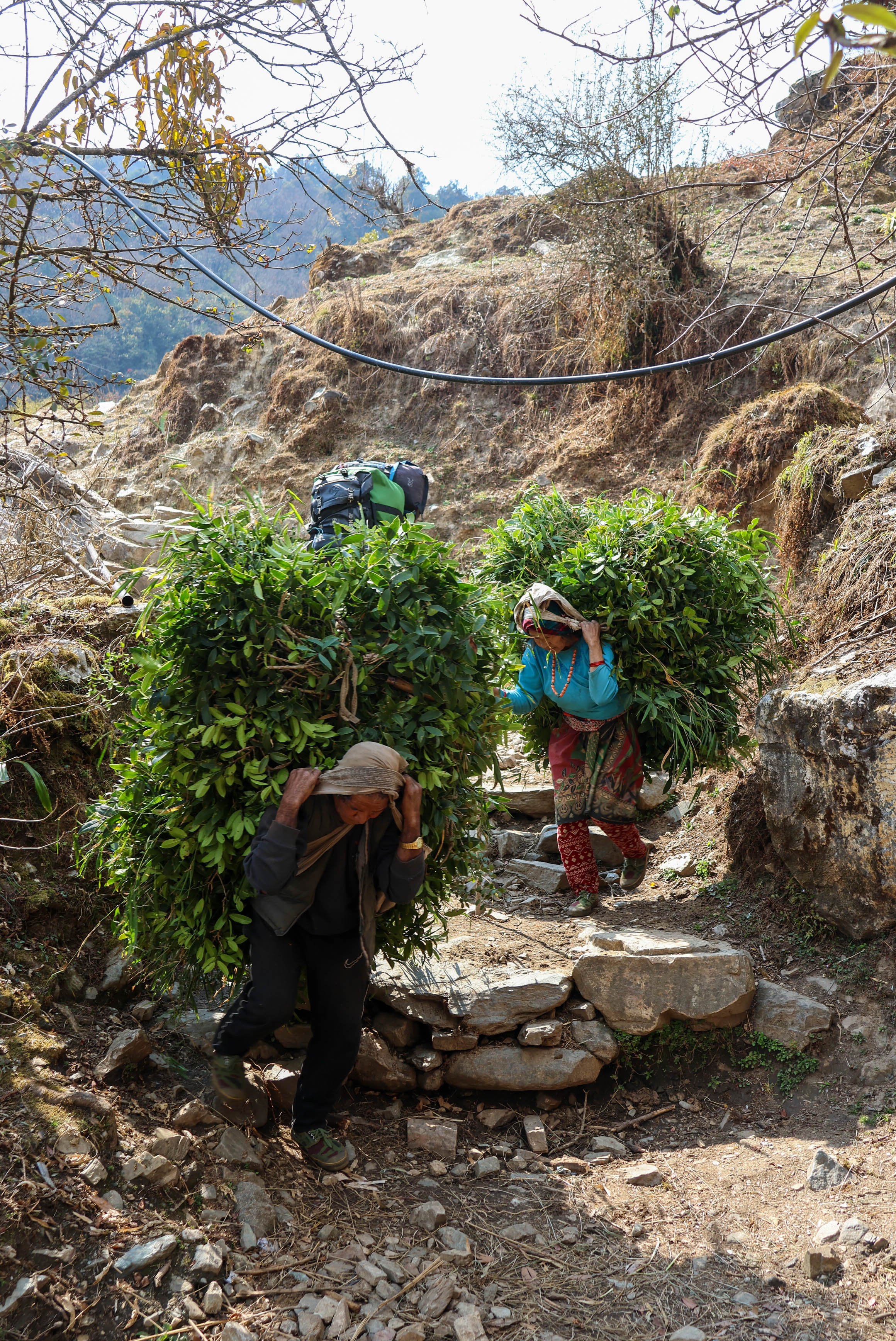
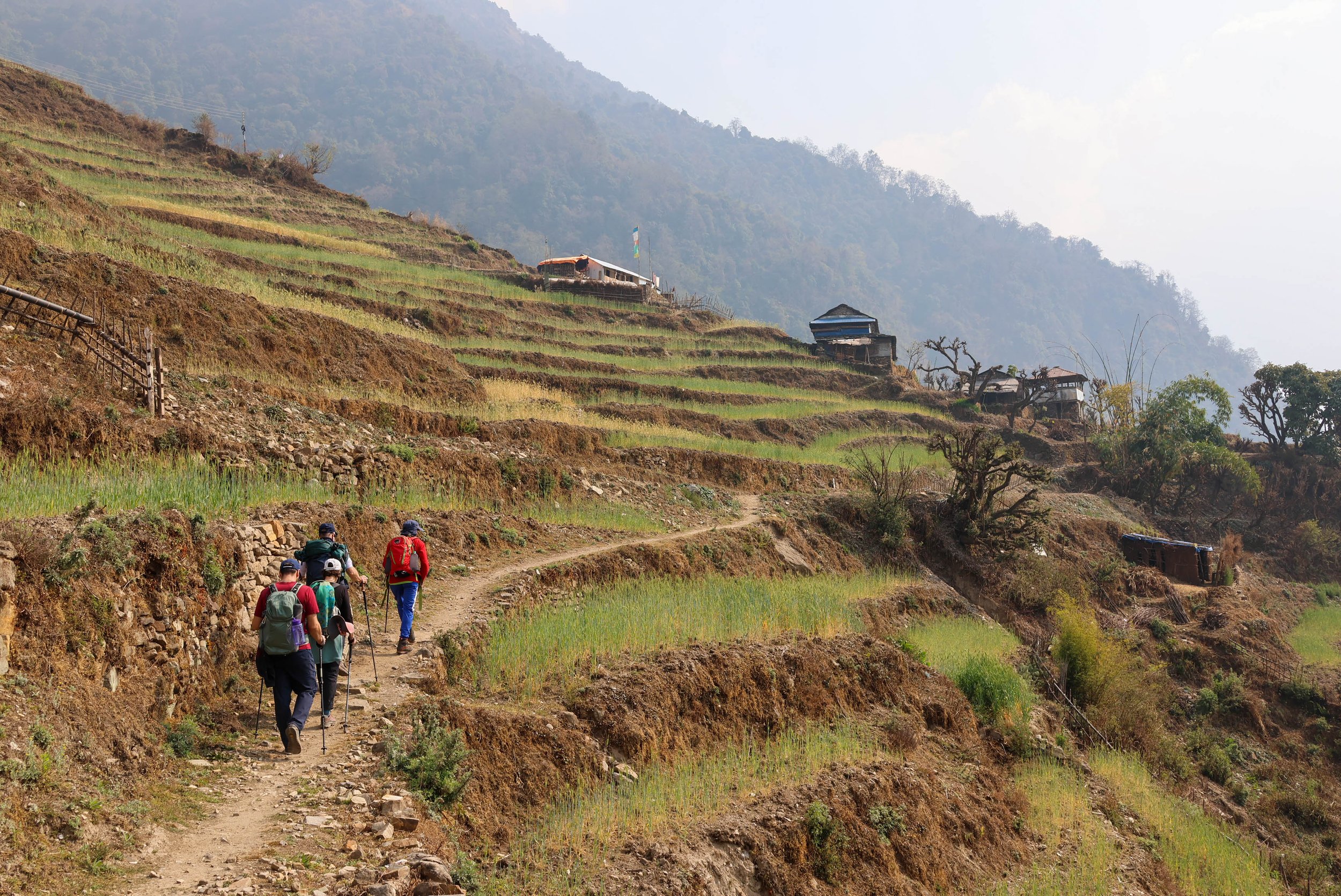
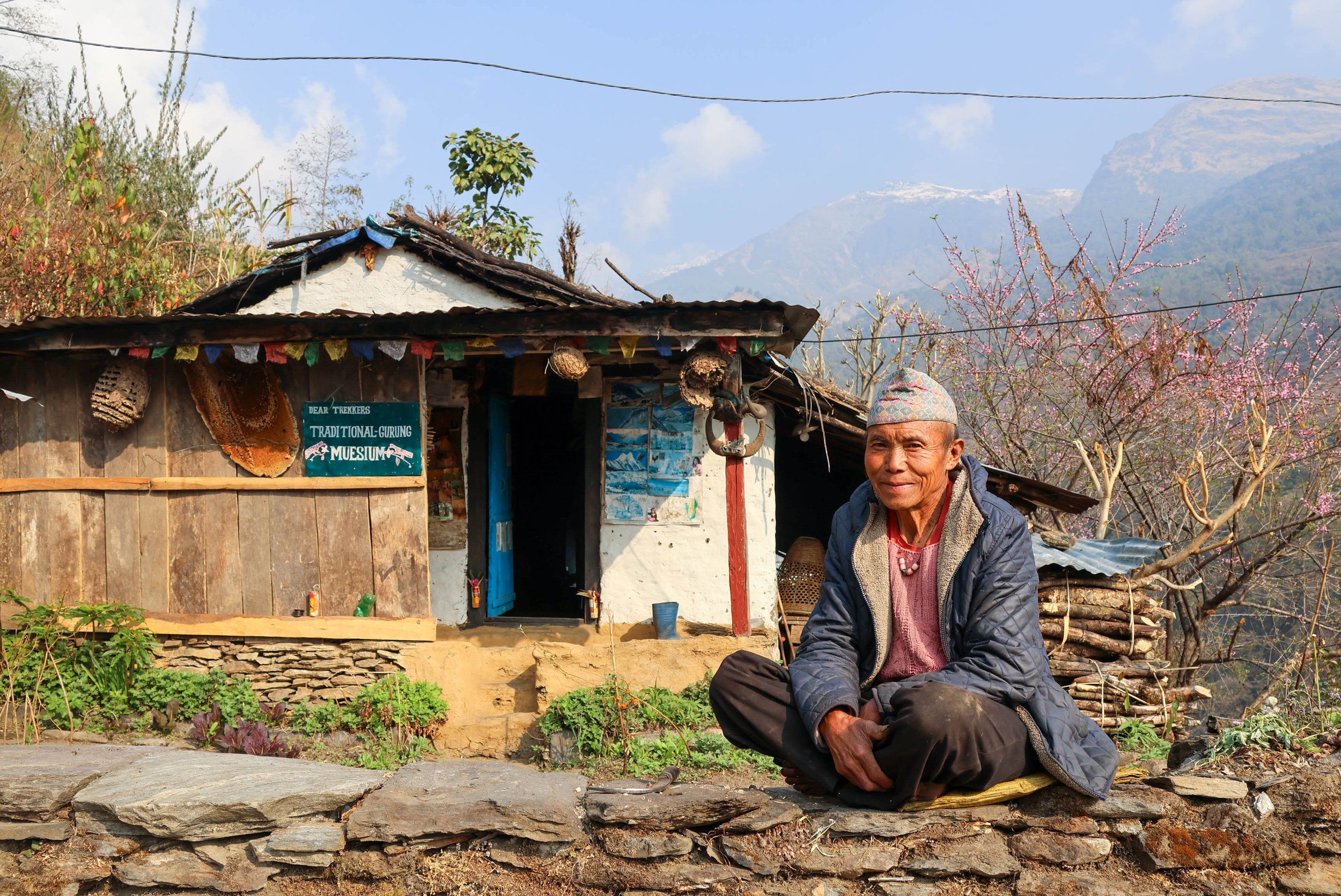
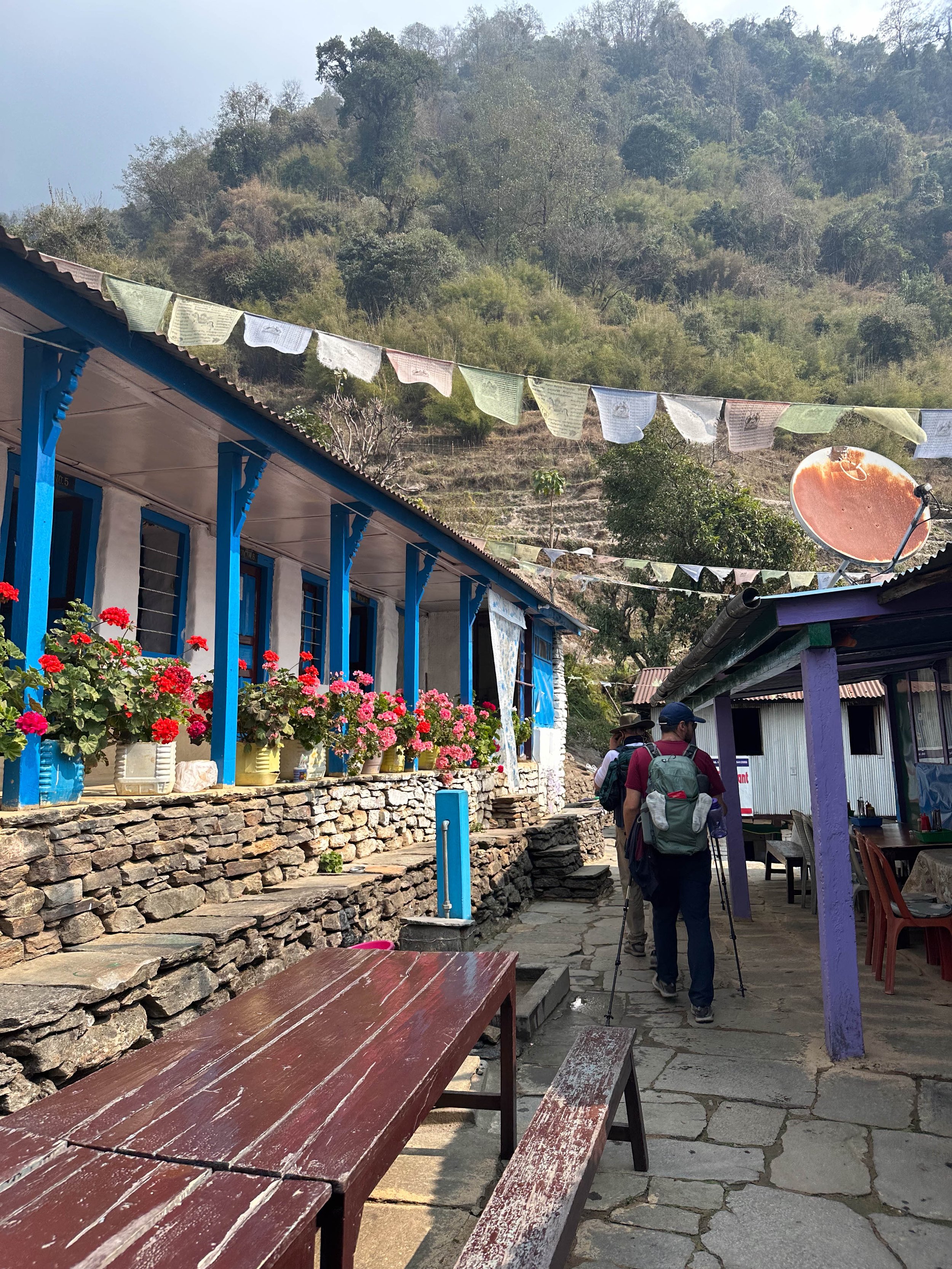
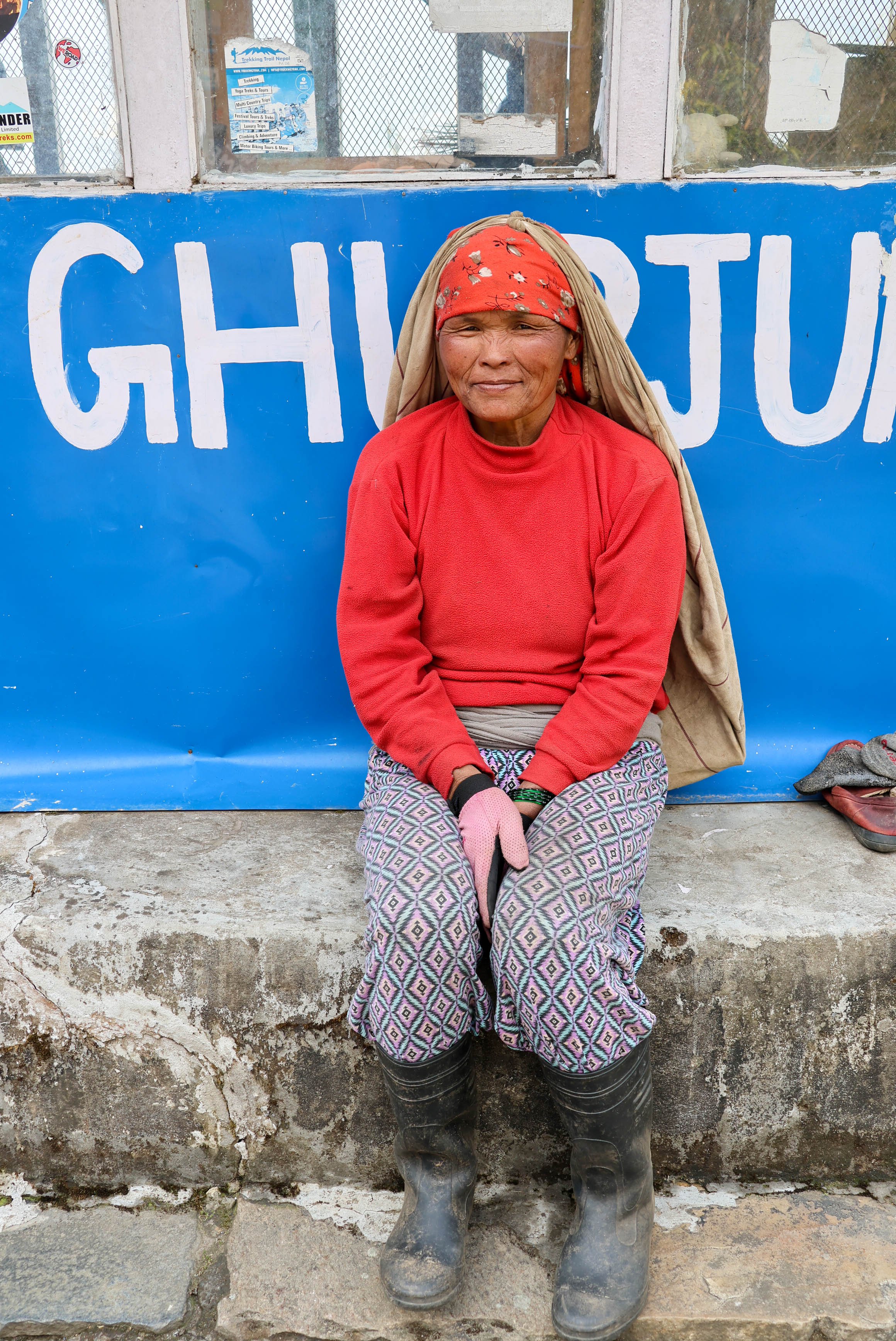
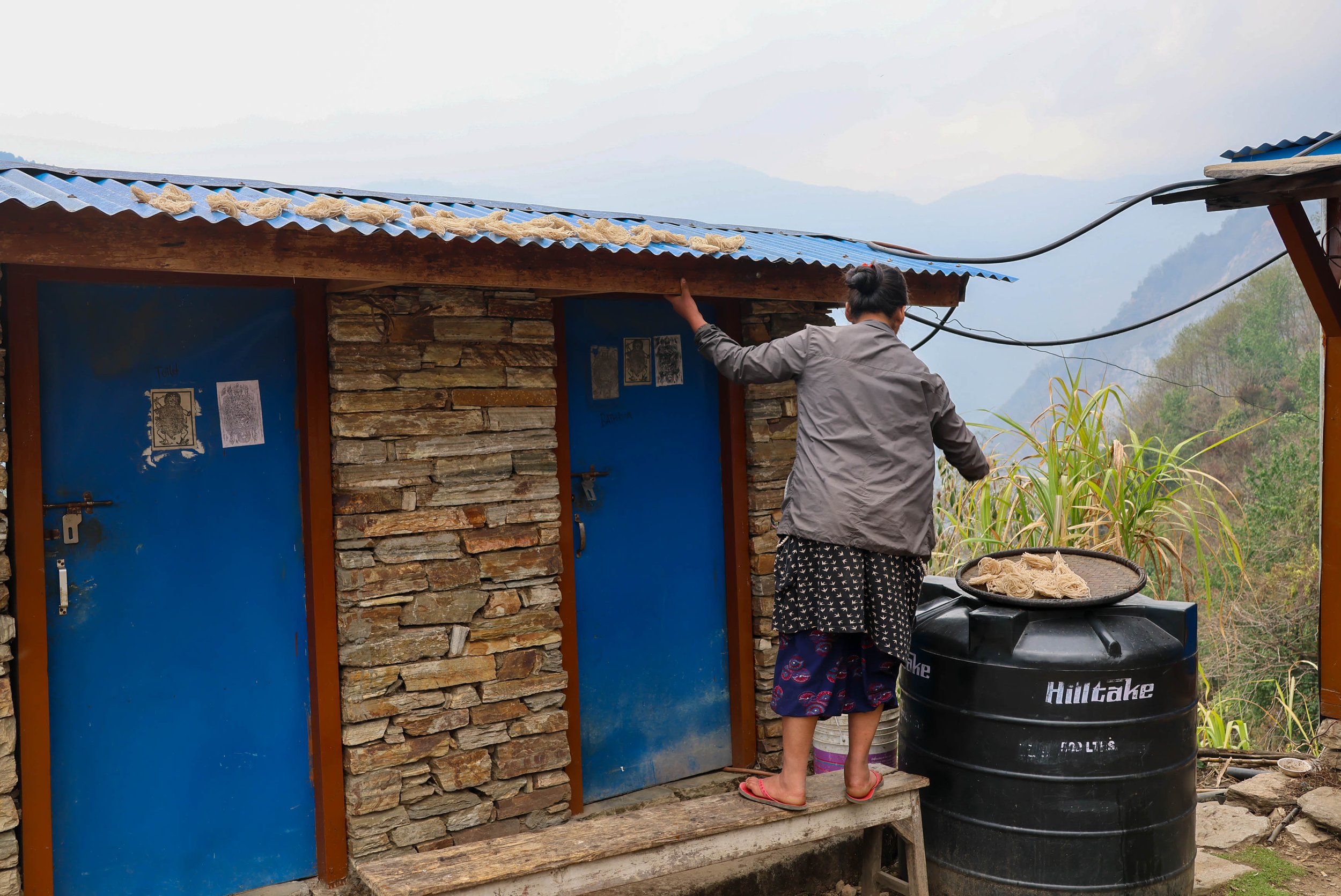
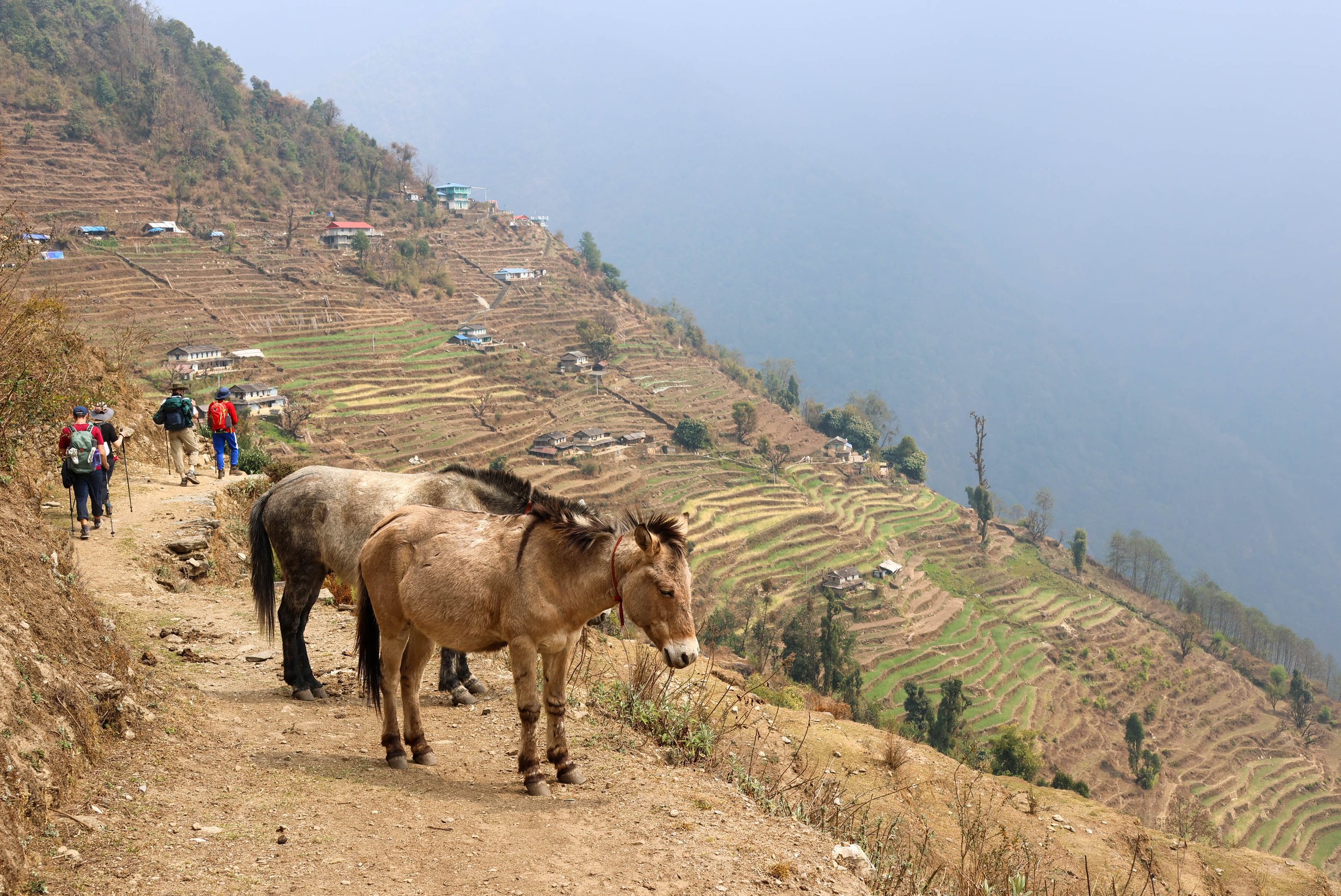
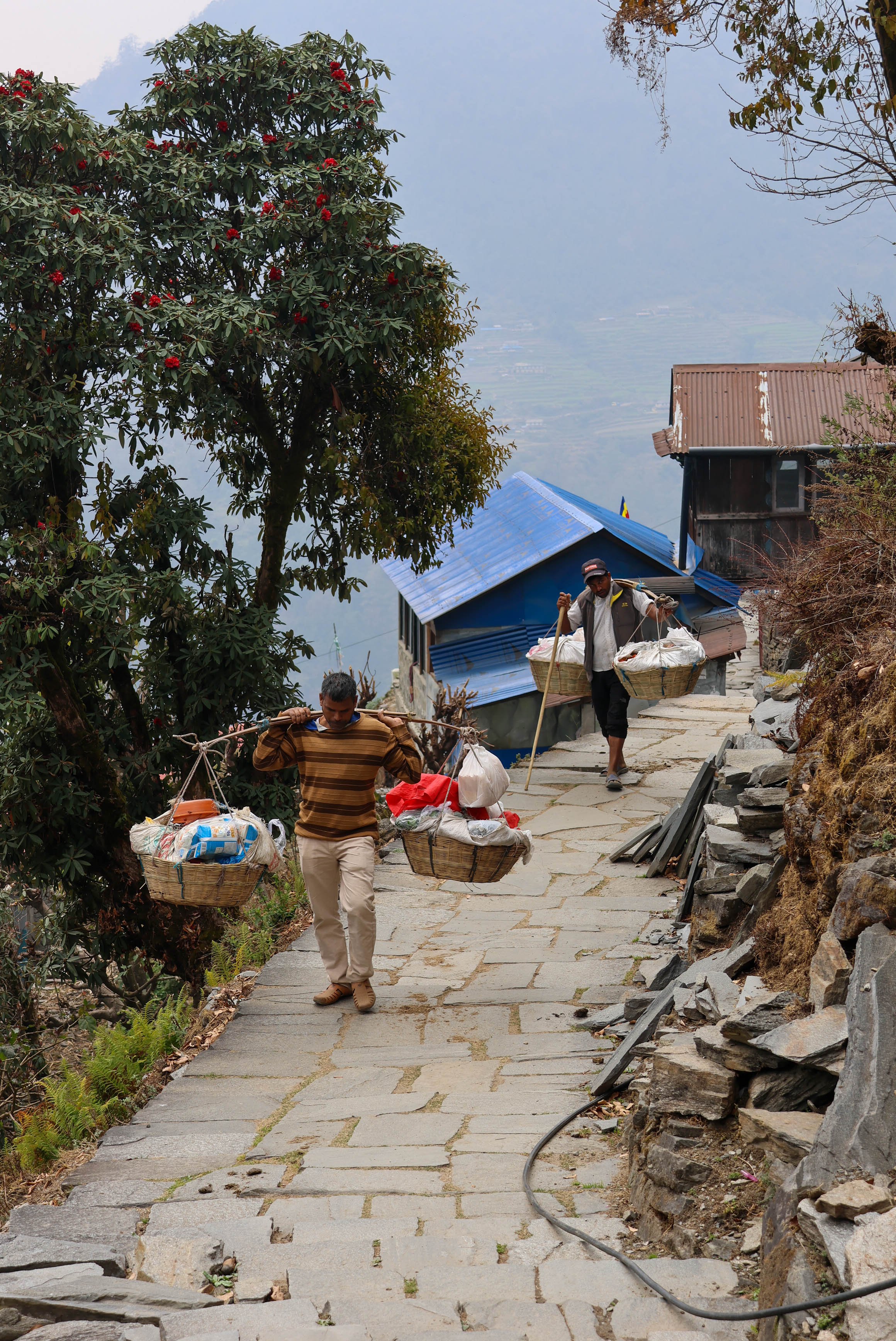
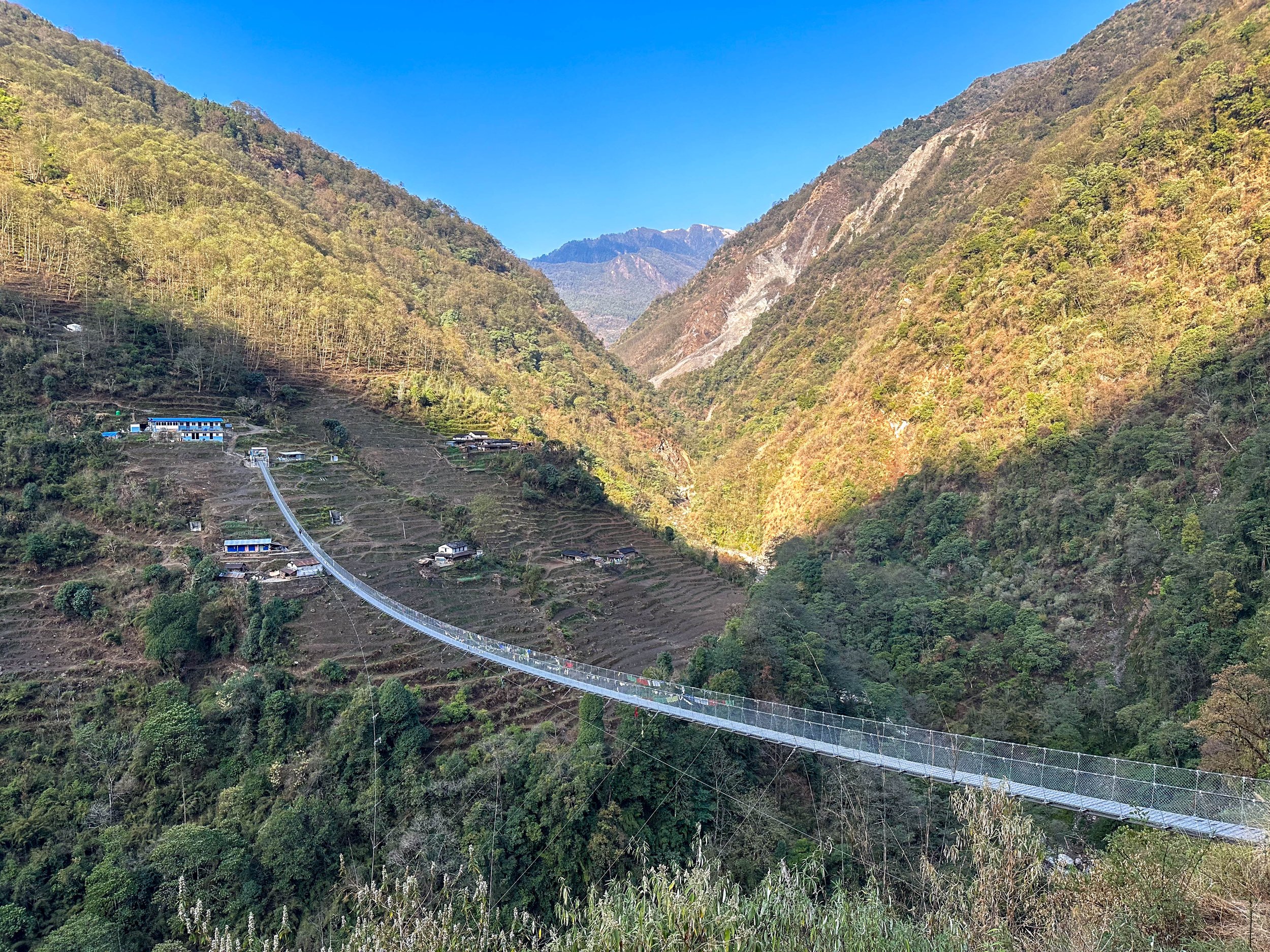

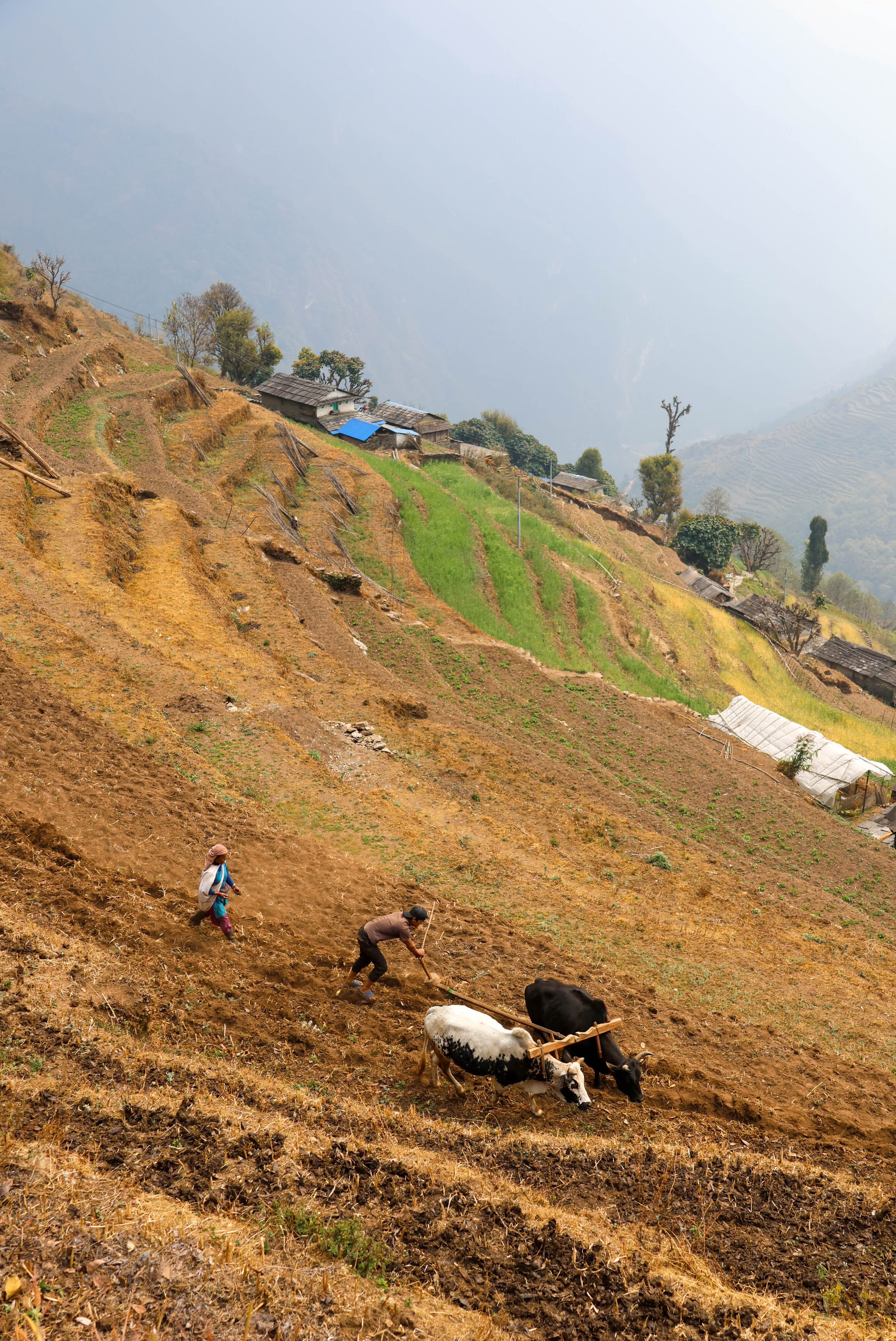
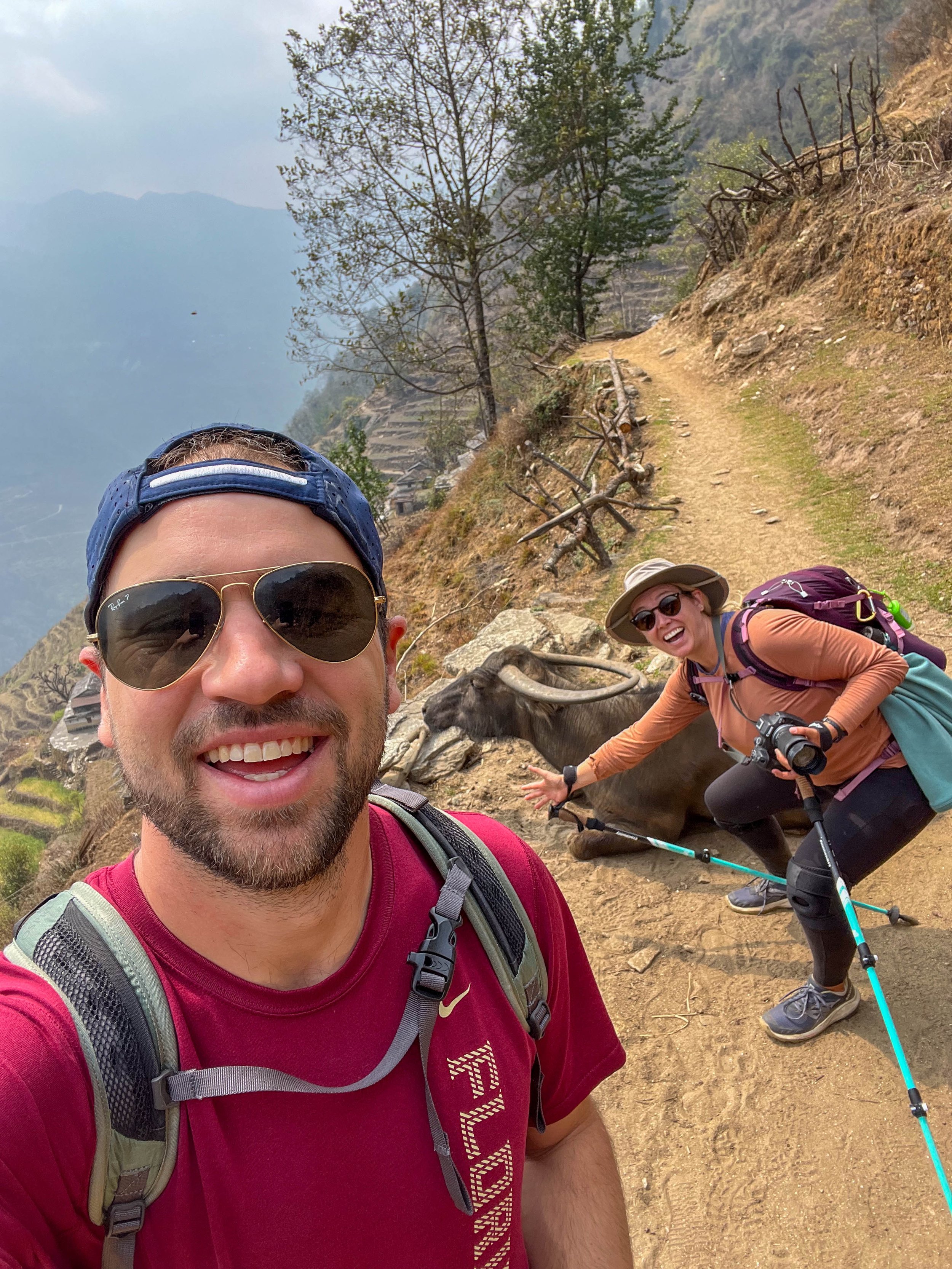
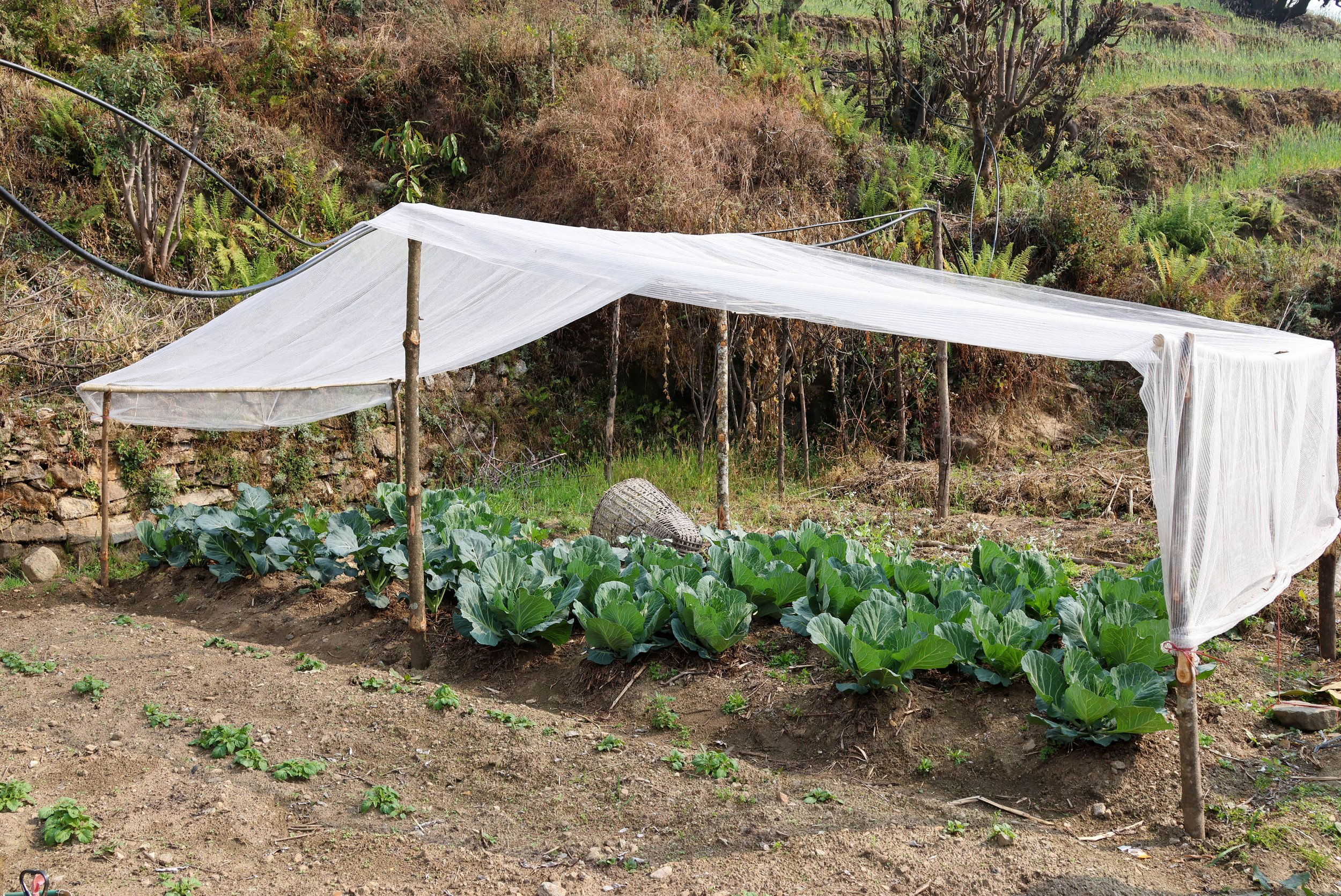

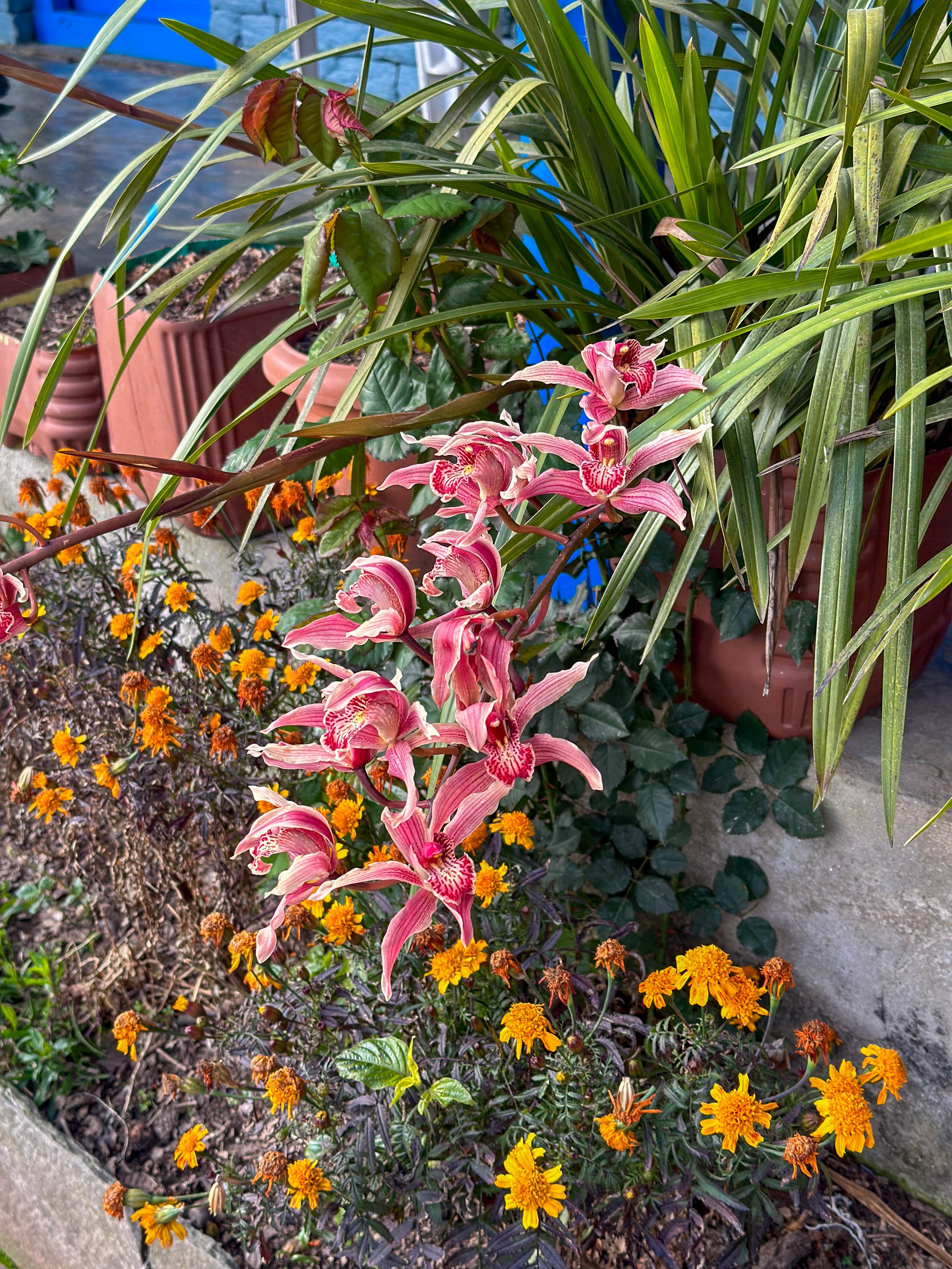
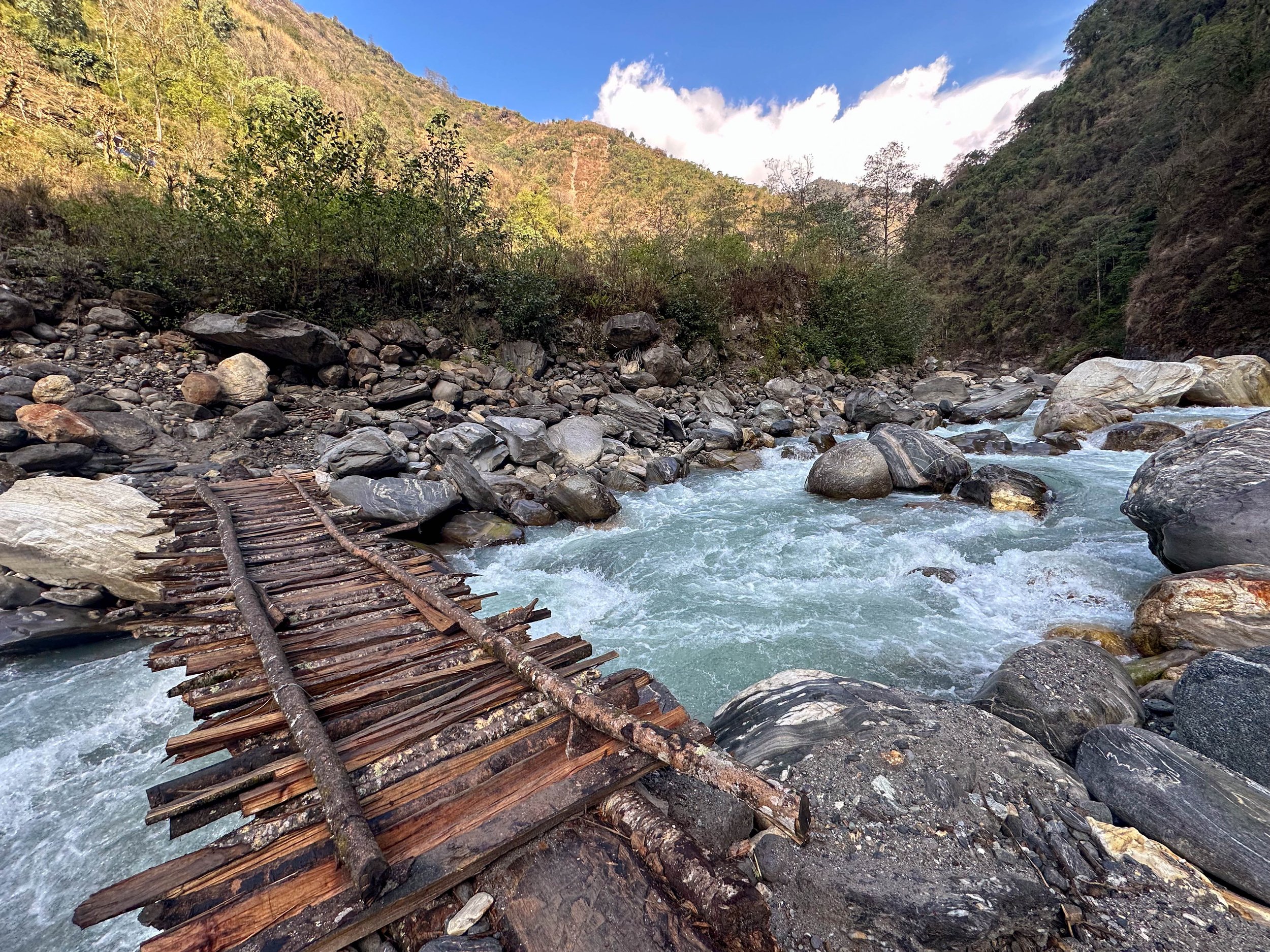
As you trek in the Himalayas, you eat, rest, and stay in places called teahouses. Teahouses got their start with some hippies wandering through trails between villages and asking locals if they could spare a cup of tea, then spare a meal, and finally spare a bed in their home at night. Now there is more infrastructure and investment around trekking but they try to keep the same vibe and experience. At night, we stayed in homes provided by local farmers called “teahouses”. Most of these teahouses are light on luxury but long on character. All of the teahouses we stayed in had dedicated facilities for trekkers that featured cozy bedrooms and bathrooms with a shower and western toilets. The family that owned the house would also cook the meals for your group. Recently the Nepalese government standardized the menus and prices that teahouses charged for meals. This was done so that trekkers could easily order off a menu with pictures and to make the supply deliveries easier since most western ingredients have to be brought in. We were eating a healthy mix of French Fries, Fried Rice, and Fried Noodles but some teahouses had some pretty delicious pizza, pastas, and even pancakes.
The real highlights of the menu were usually Dhal Bat, Momos, and Gurung Bread. Dhal Bat is an assortment of small dishes like curries, lentil soup, rice, pickled vegetables, and steamed rice. The best part about Dhal Bat was that they would refill your plate with whatever you wanted so if the pickled veggies or potato curry was extra delicious you could eat until you were full. Momos are a delicious dumpling stuffed with chopped veggies that are either steamed or fried. Gurung Bread is a local bread that is cooked in a fry pan so it is light, sweet, and hollow. There was plenty of honey and tea served at every meal; we have all deemed a “ginger lemon honey tea” as our new favorite drink. The family that ran each teahouse would cook for us out of their own kitchen and we would sometimes watch as they used traditional methods and stoves to make our food. We would mostly hang out in the dining area even when we weren’t eating since our rooms were pretty simple; none had heaters anywhere. Most nights got pretty cold and we went to bed fully clothed and slept in our cold weather sleeping bags. Other than that though we were very lucky with the weather; we only got rained on once or twice during the day and never for very long.
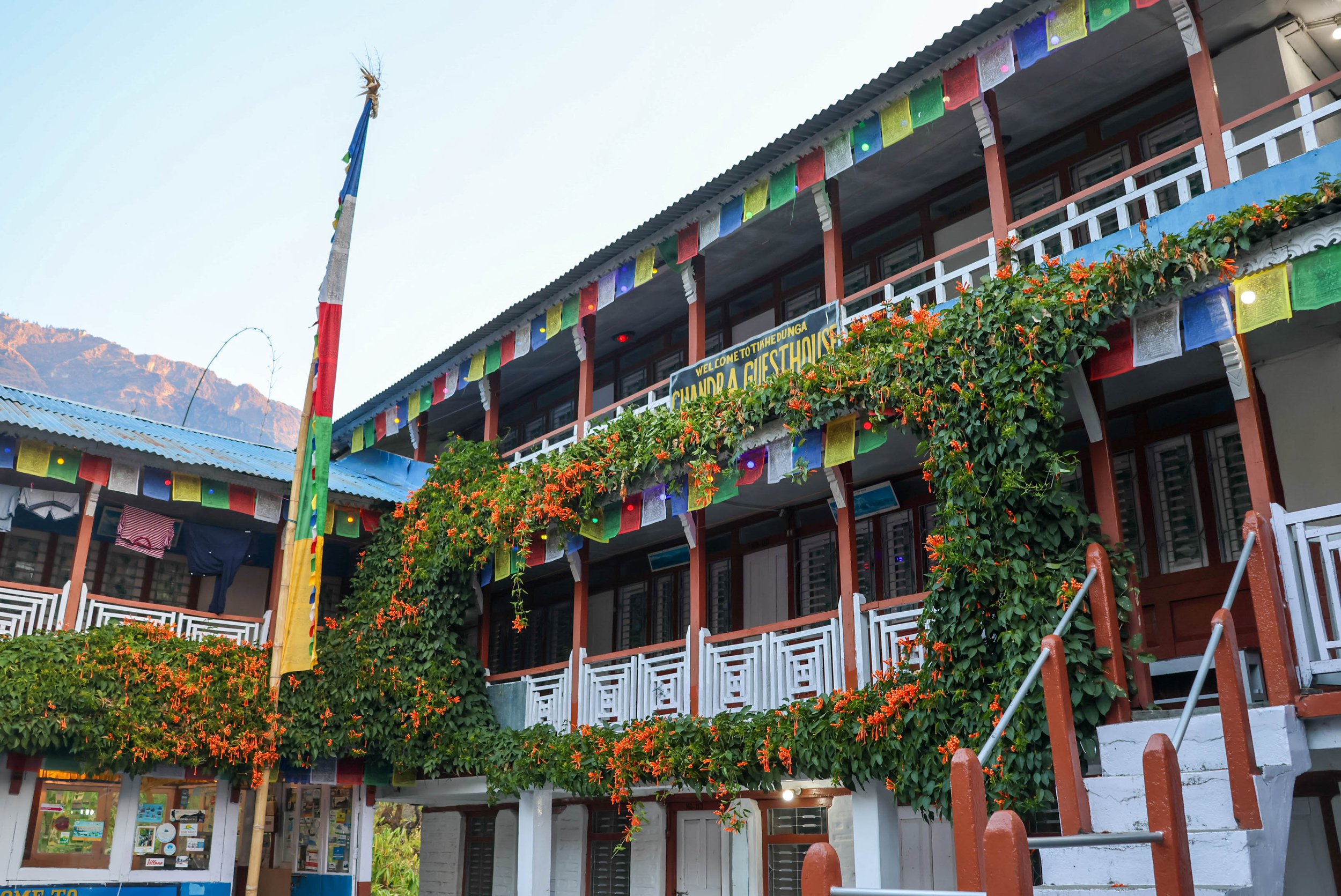

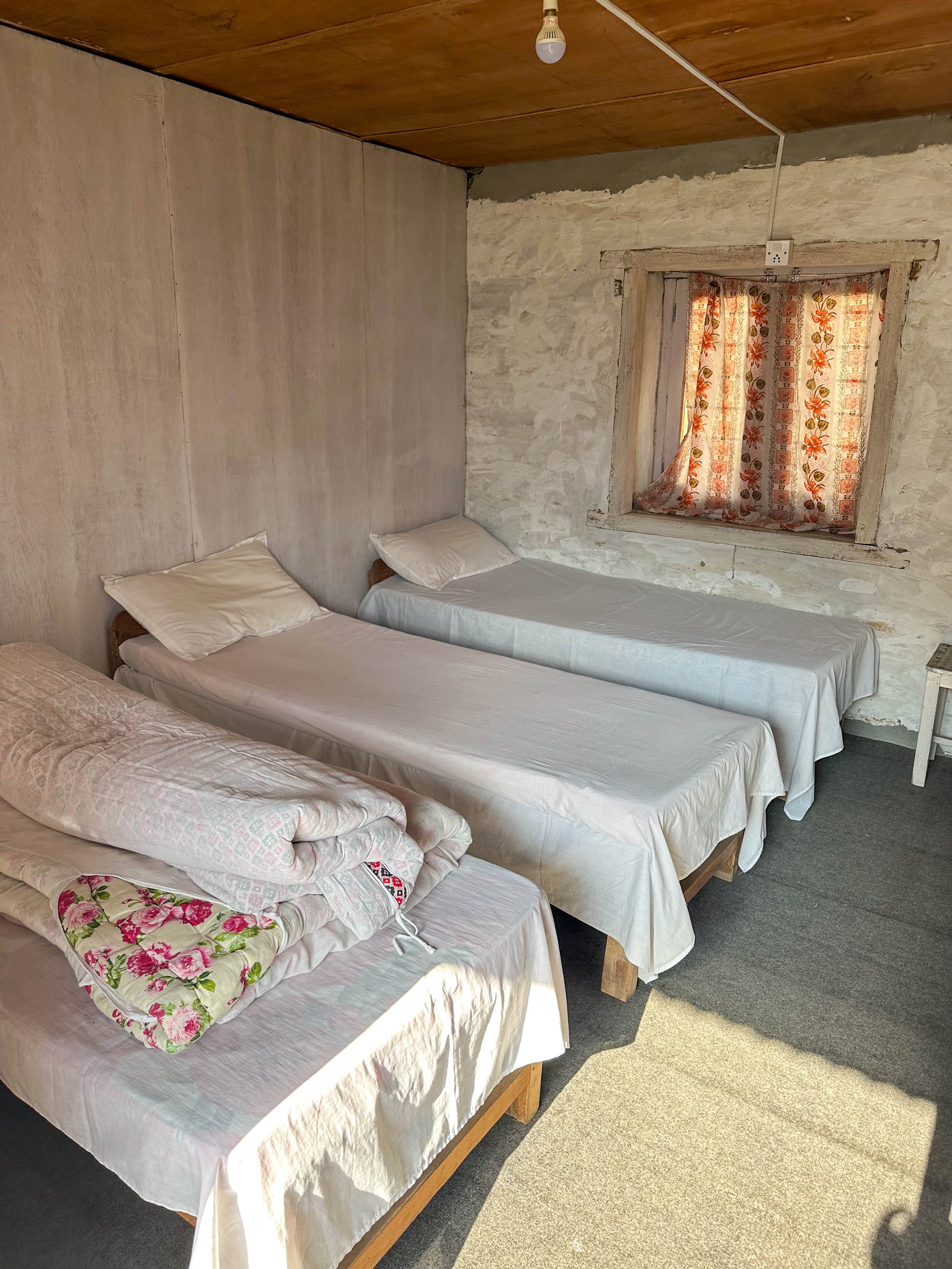





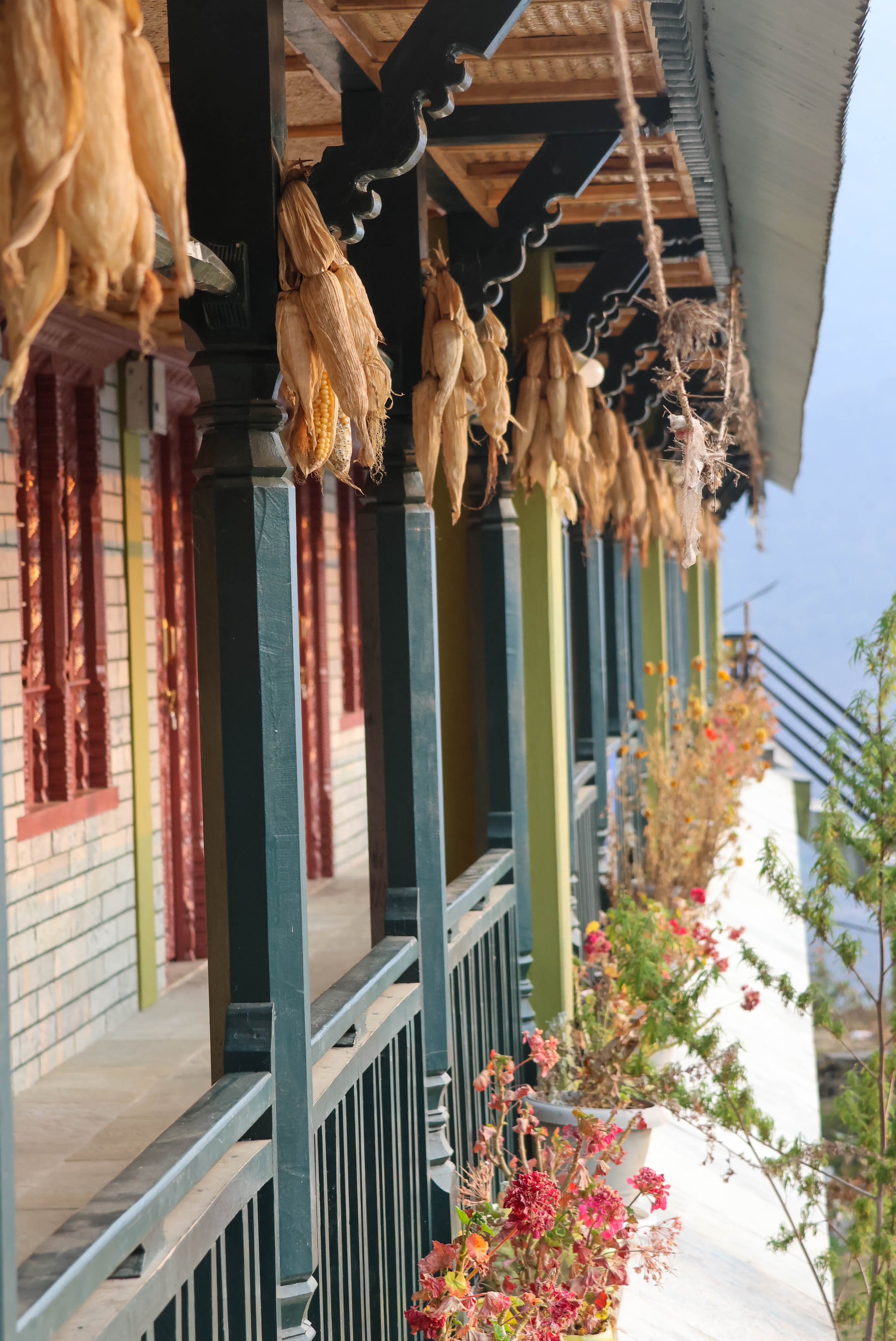



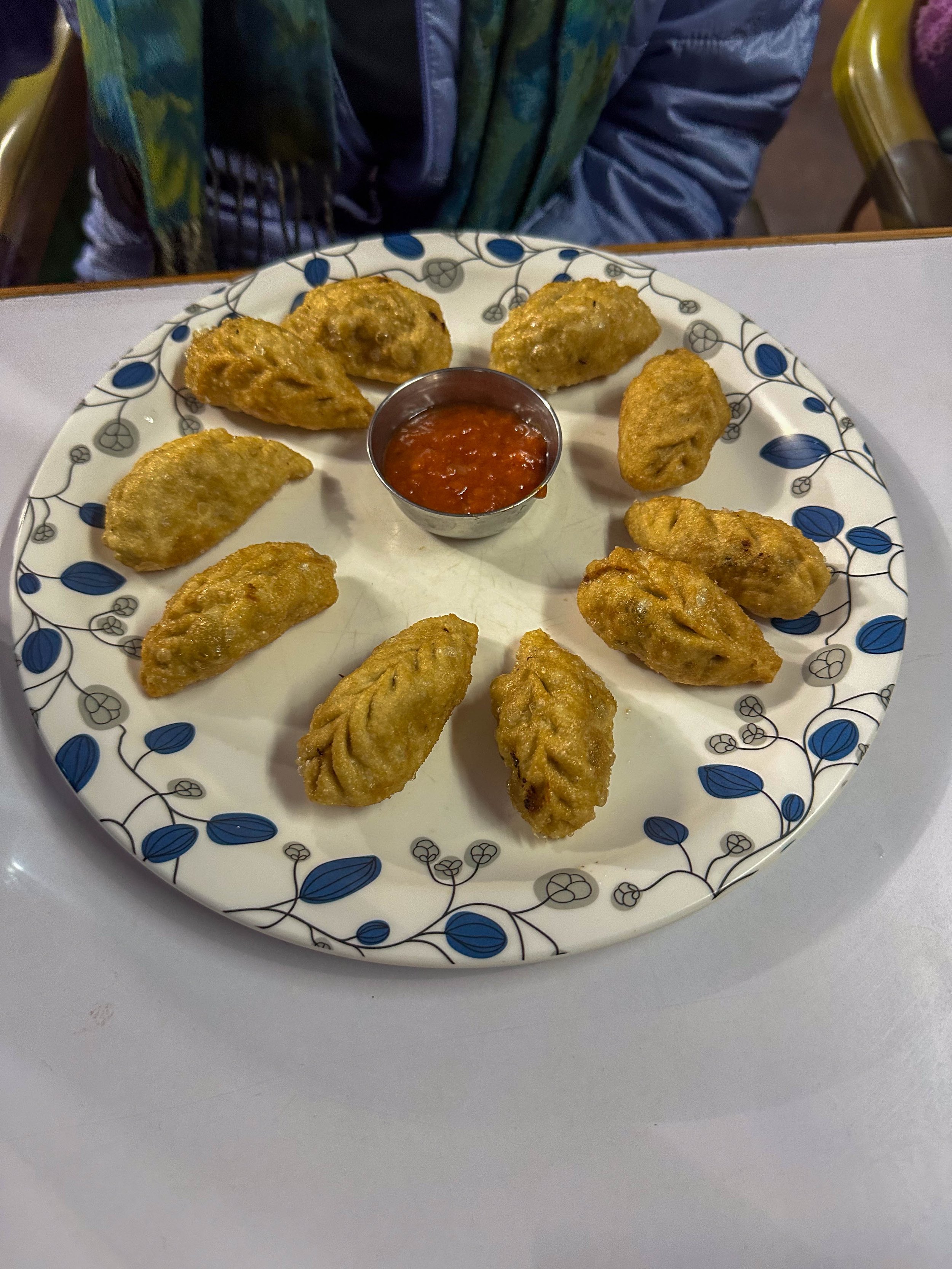
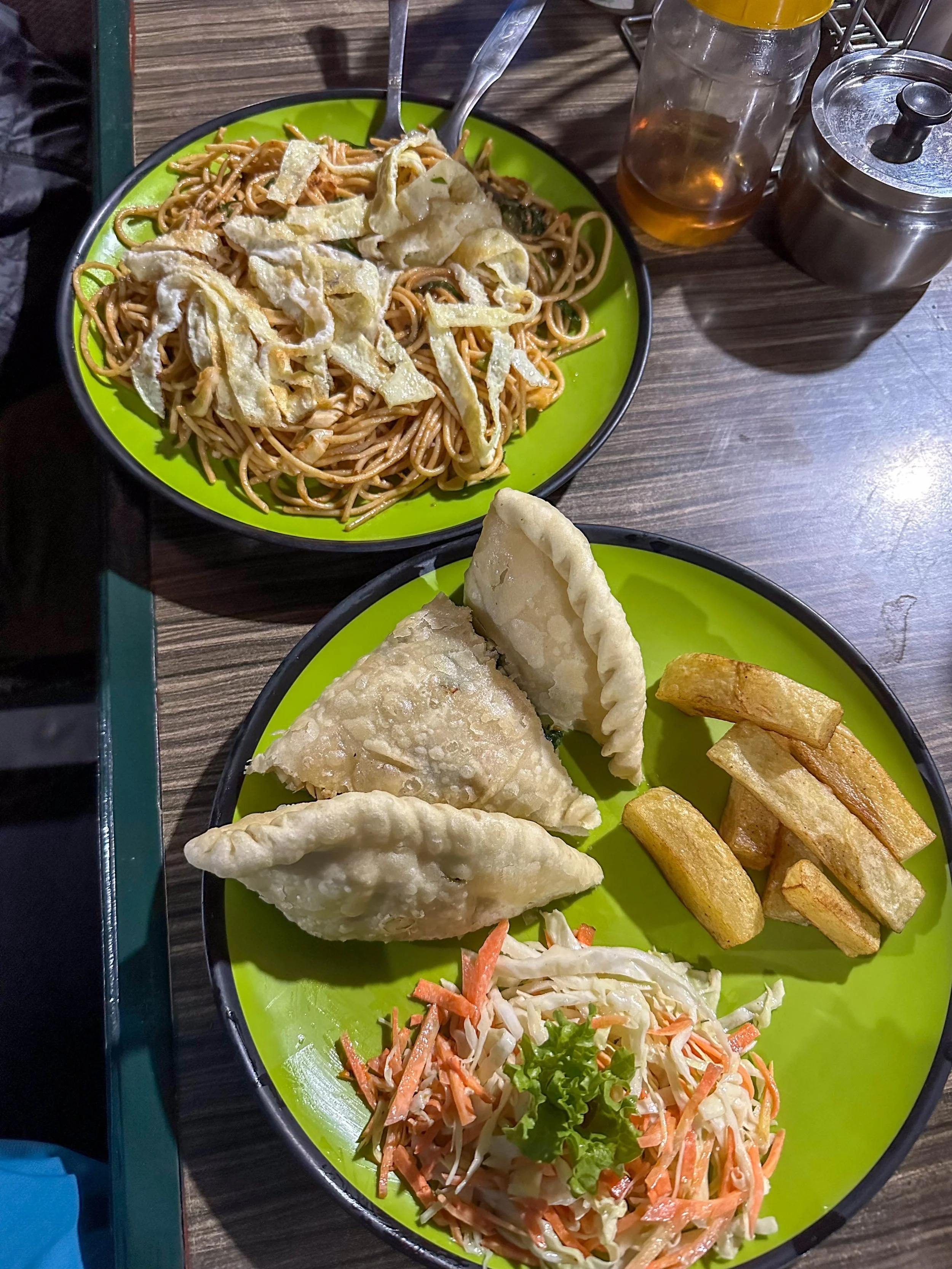





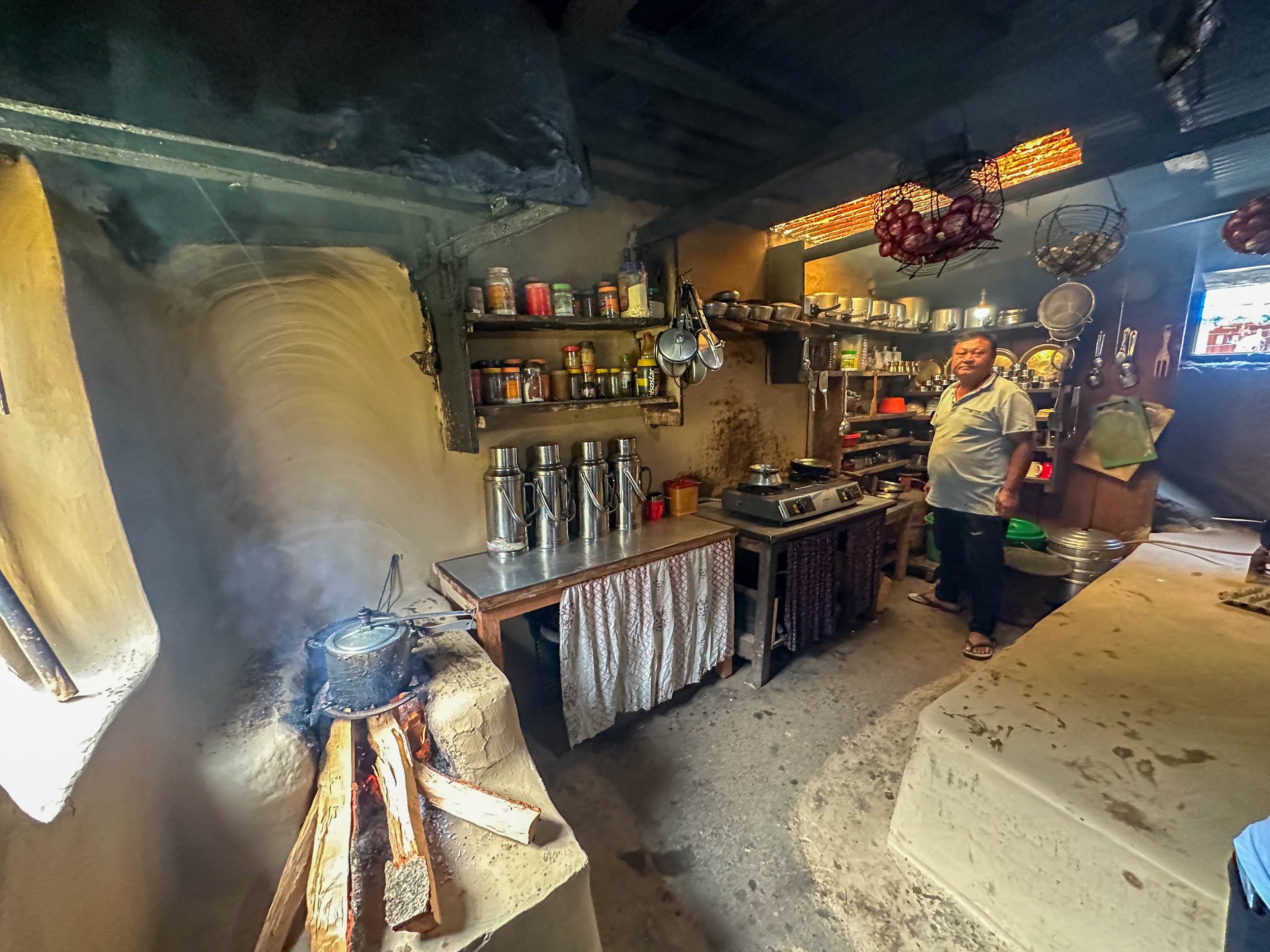
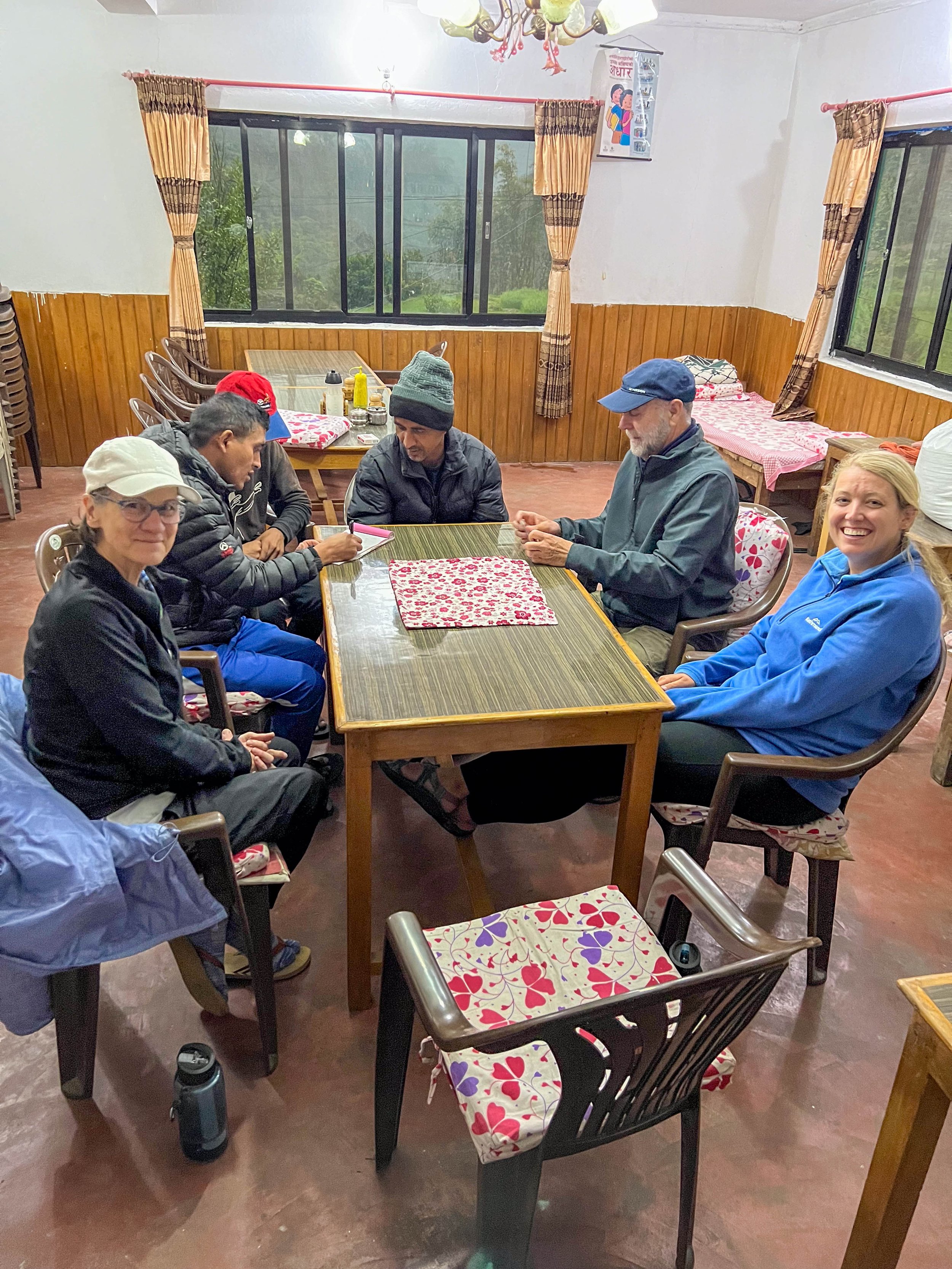
The trekking experience was amazing and one that we will never forget. We climbed countless steps, took far too many photos, and were constantly in awe of the beauty of the Himalayas right in front of us. Our porters Romney and Ruskin did the real heavy lifting of the trip to help carry our packs. And our guide Dinesh helped facilitate a week we will never forget. The locals we met through Dinesh translating were so kind and welcoming. We learned so much about the Nepalese ways and Matt and Susan definitely plan on coming back to get to Annapurna Base Camp and possibly do the Annapurna Circuit!
